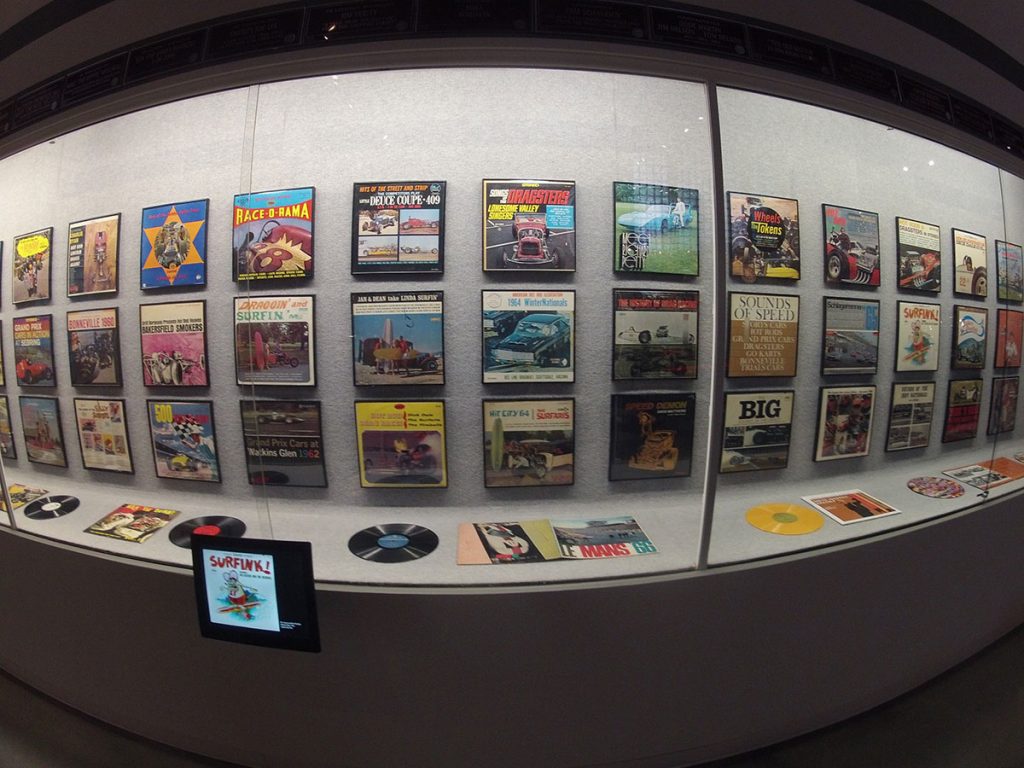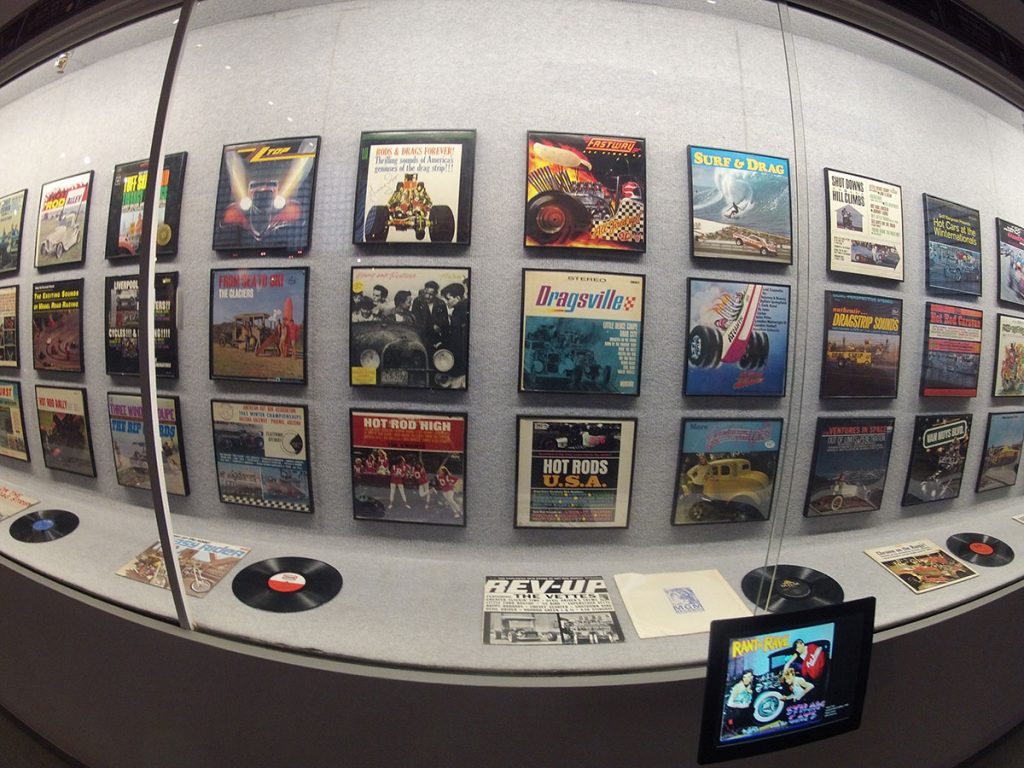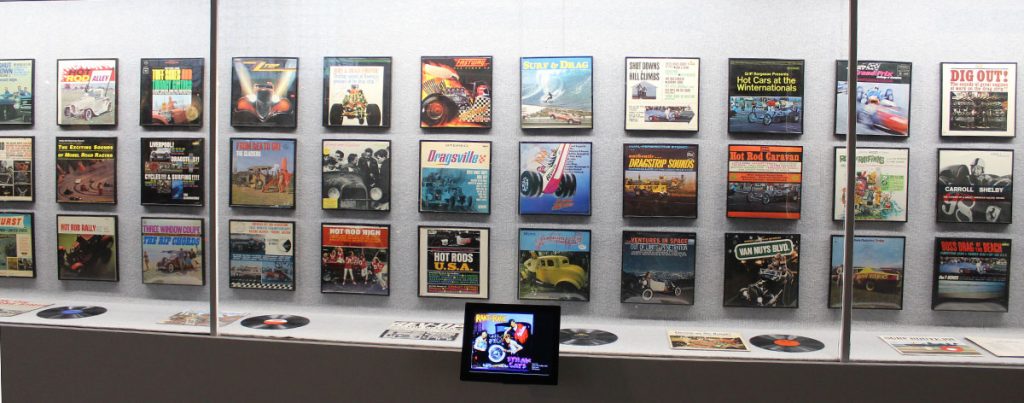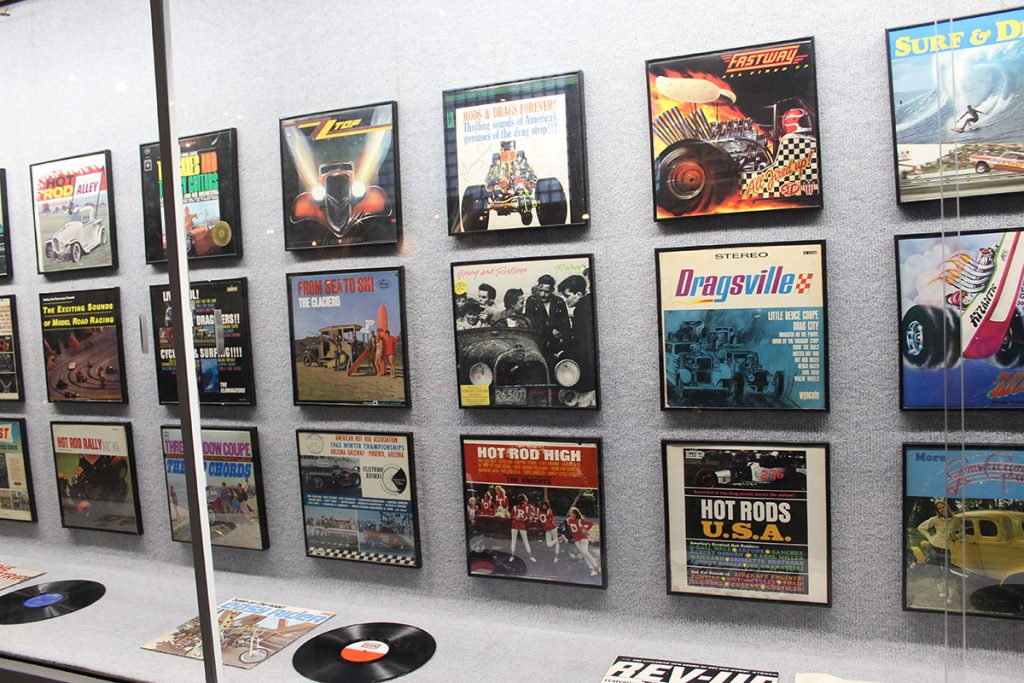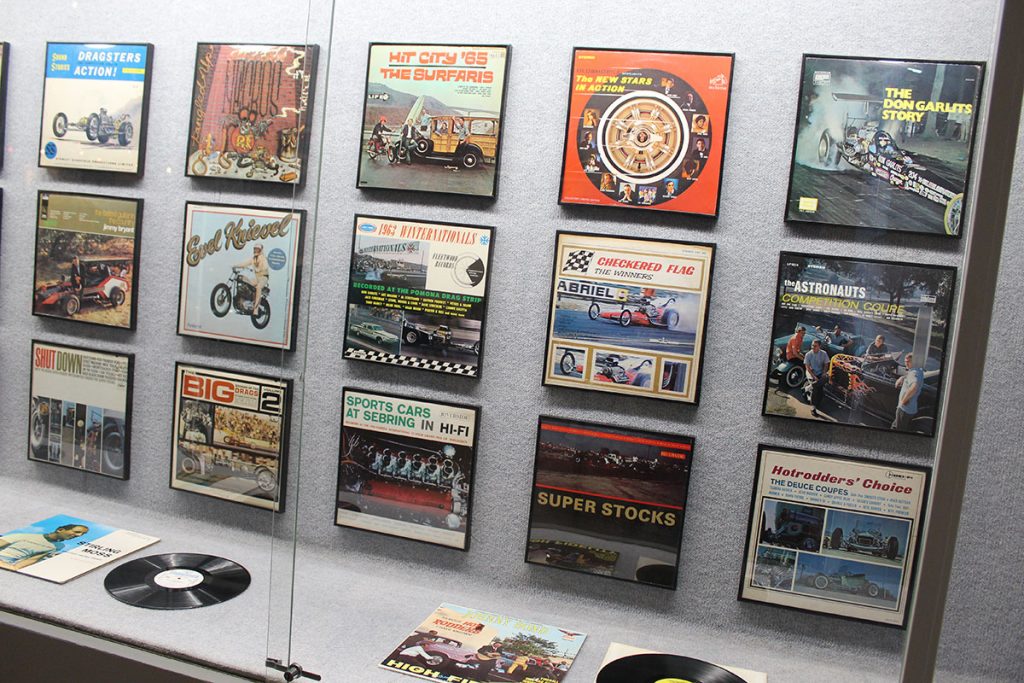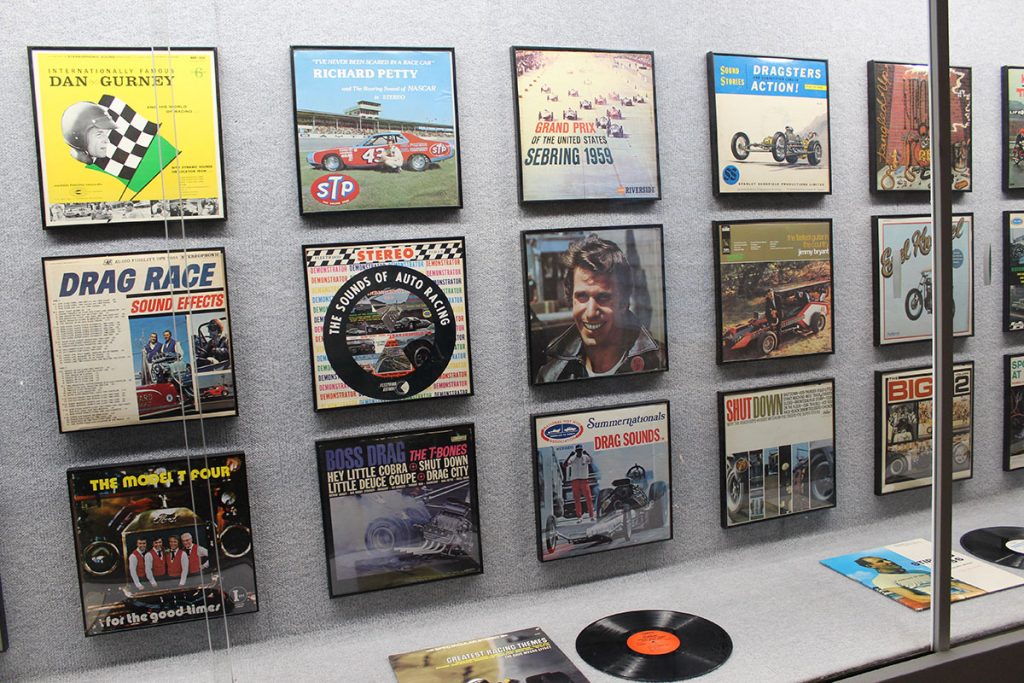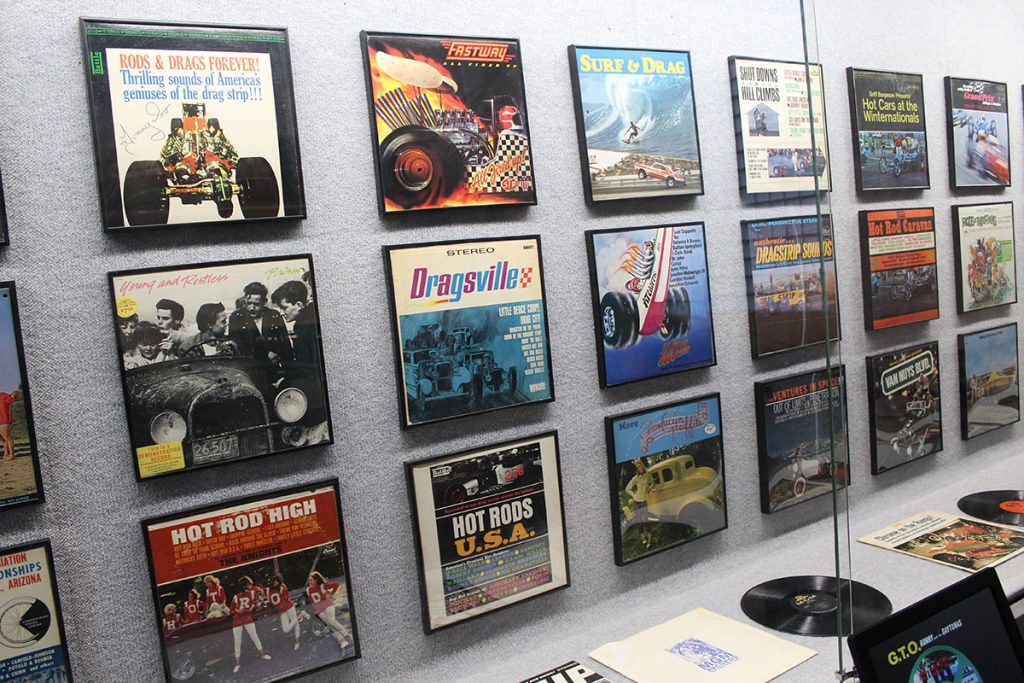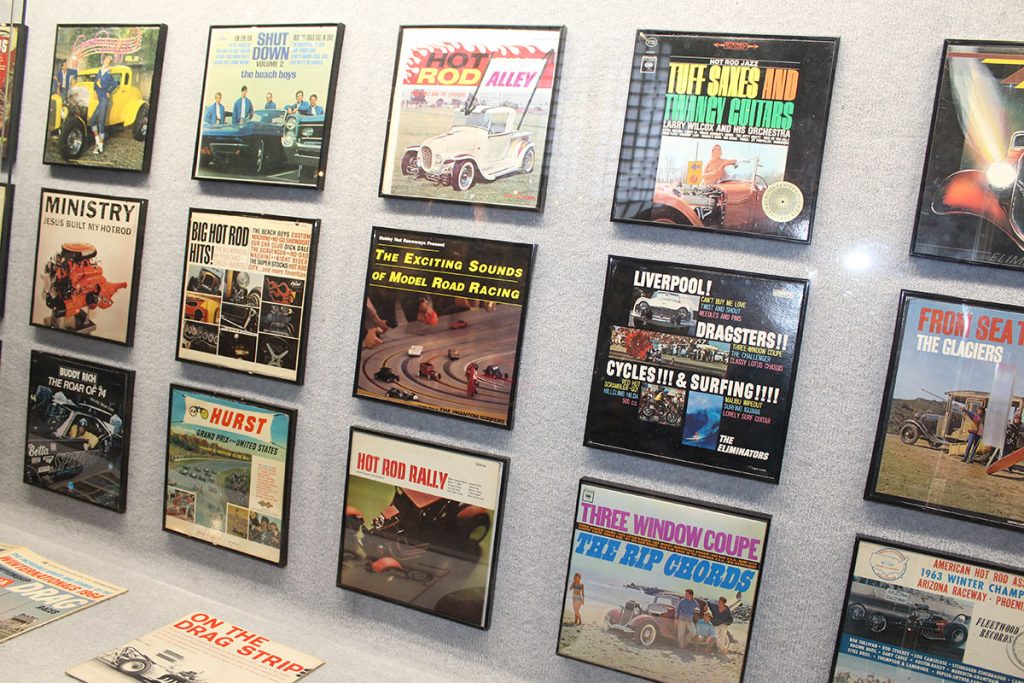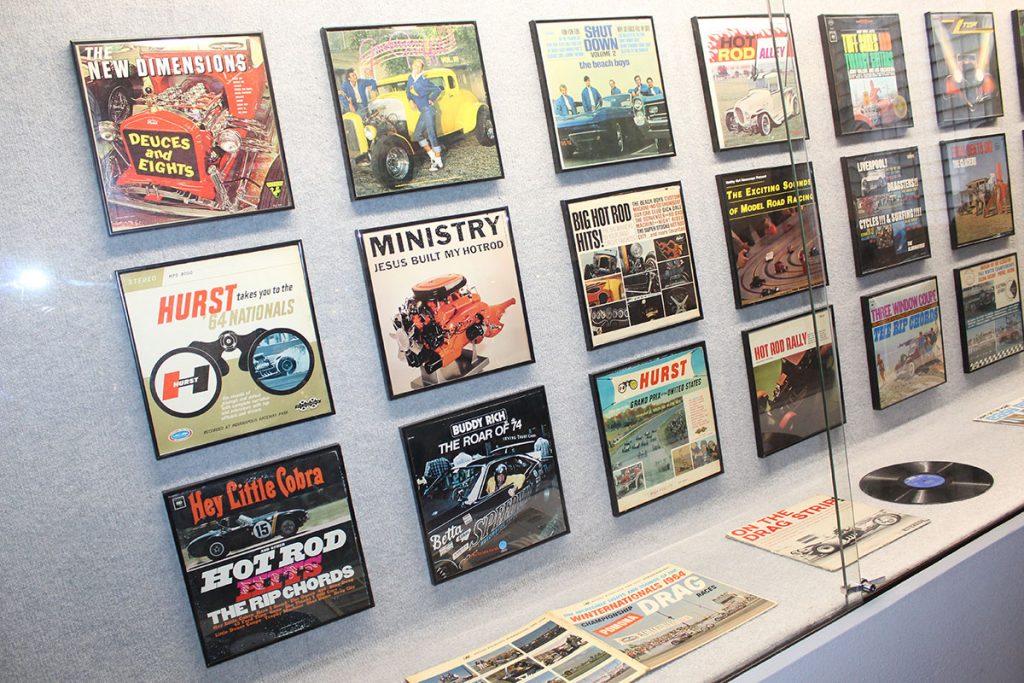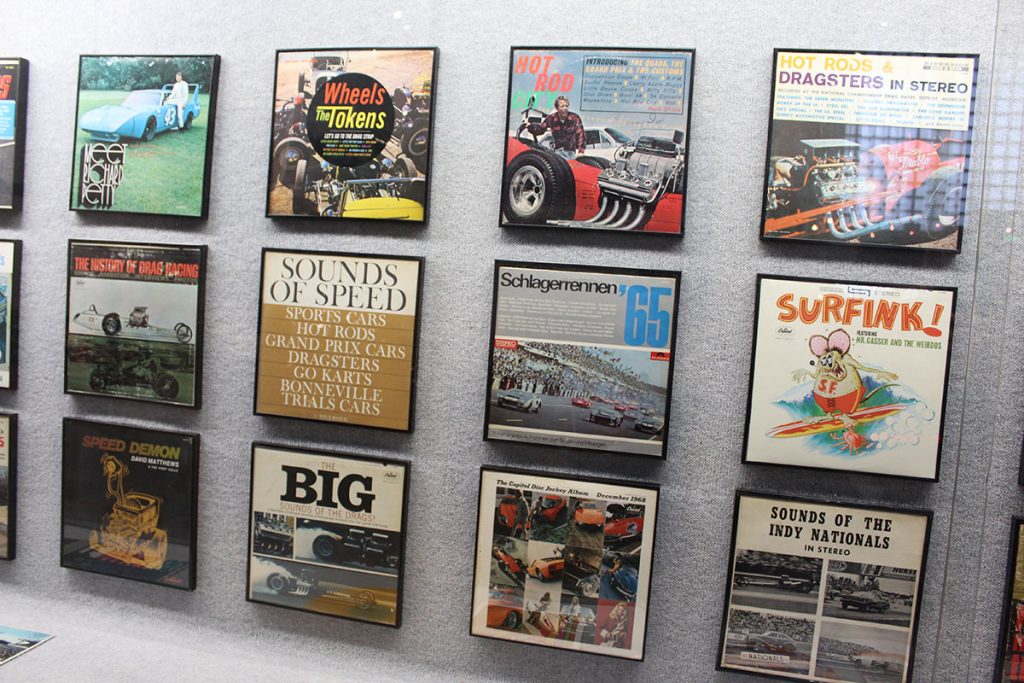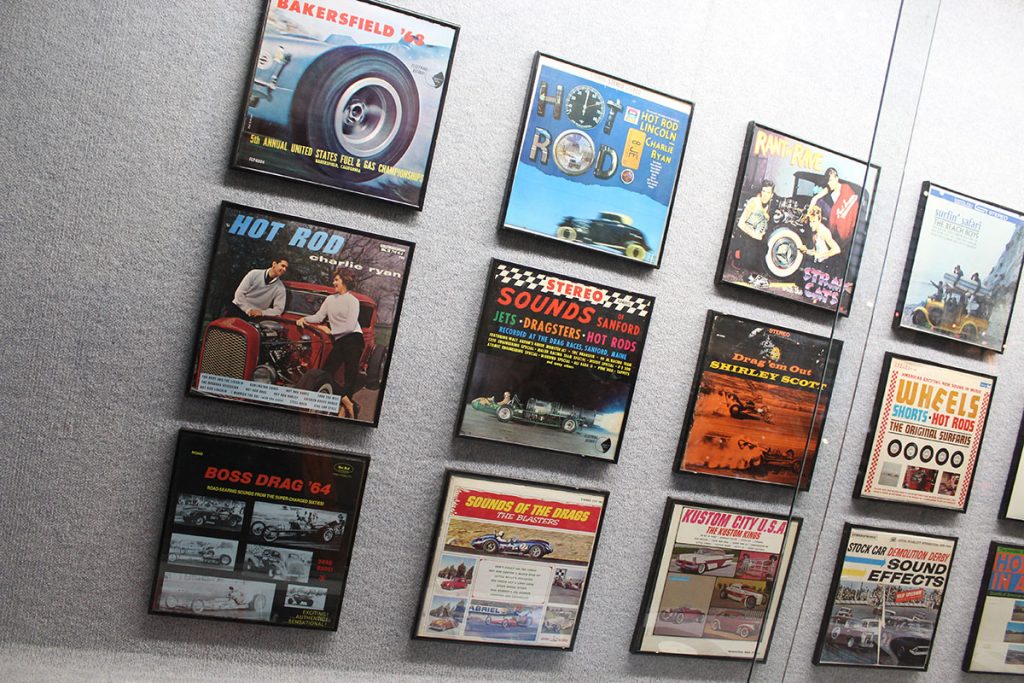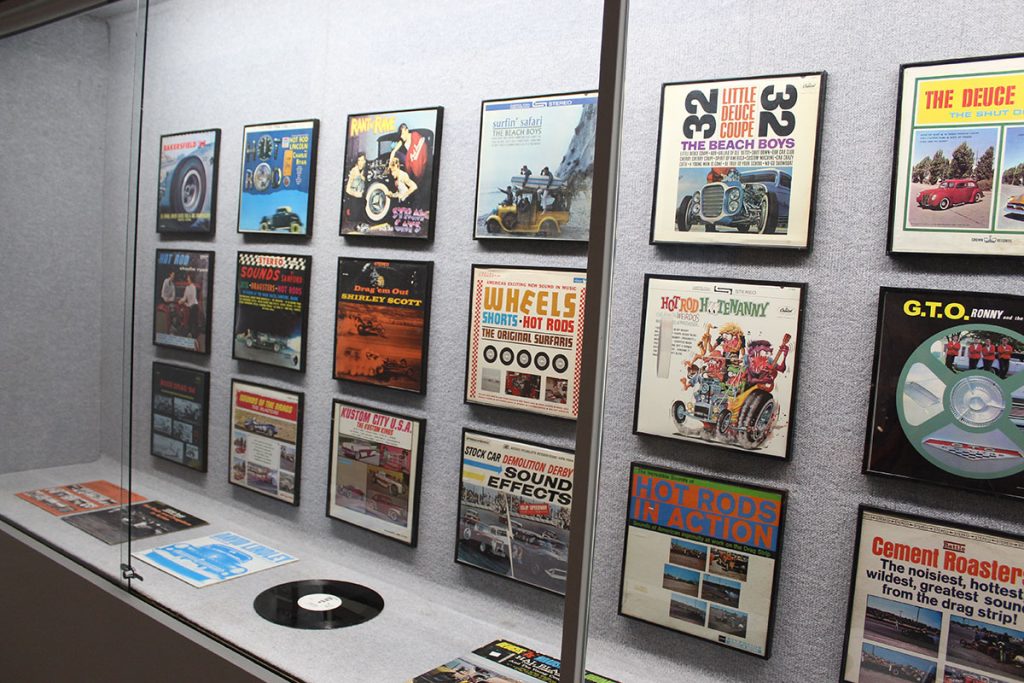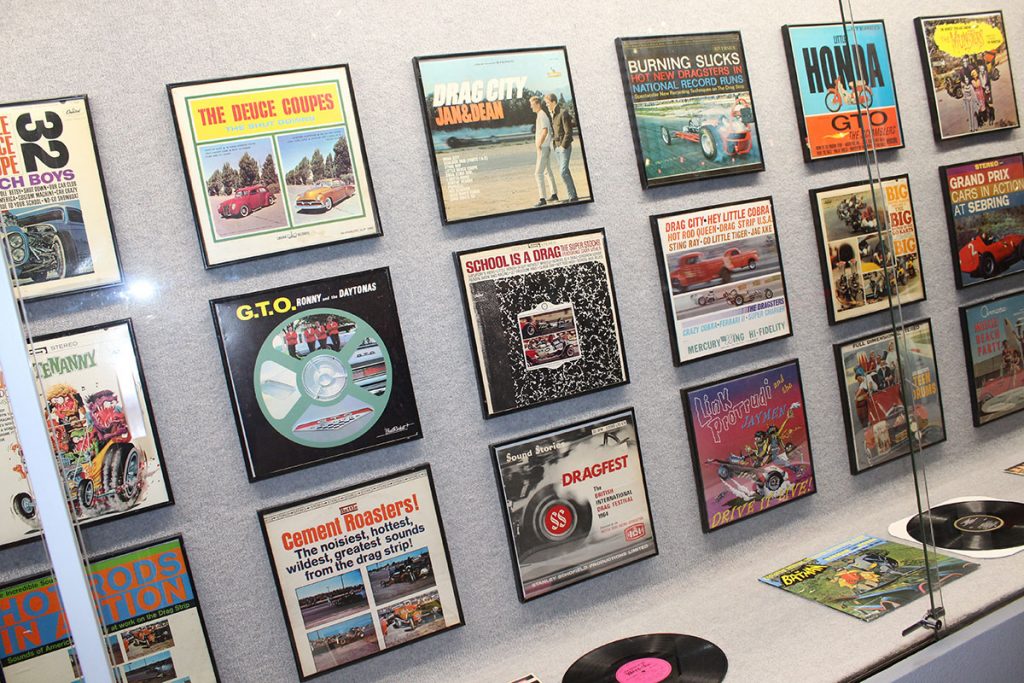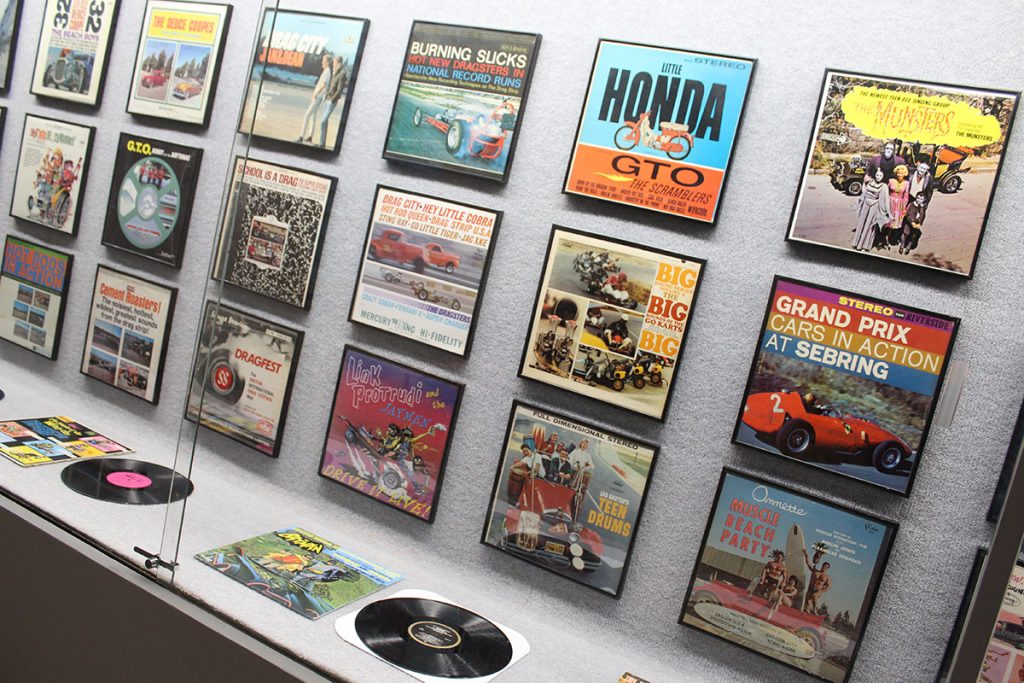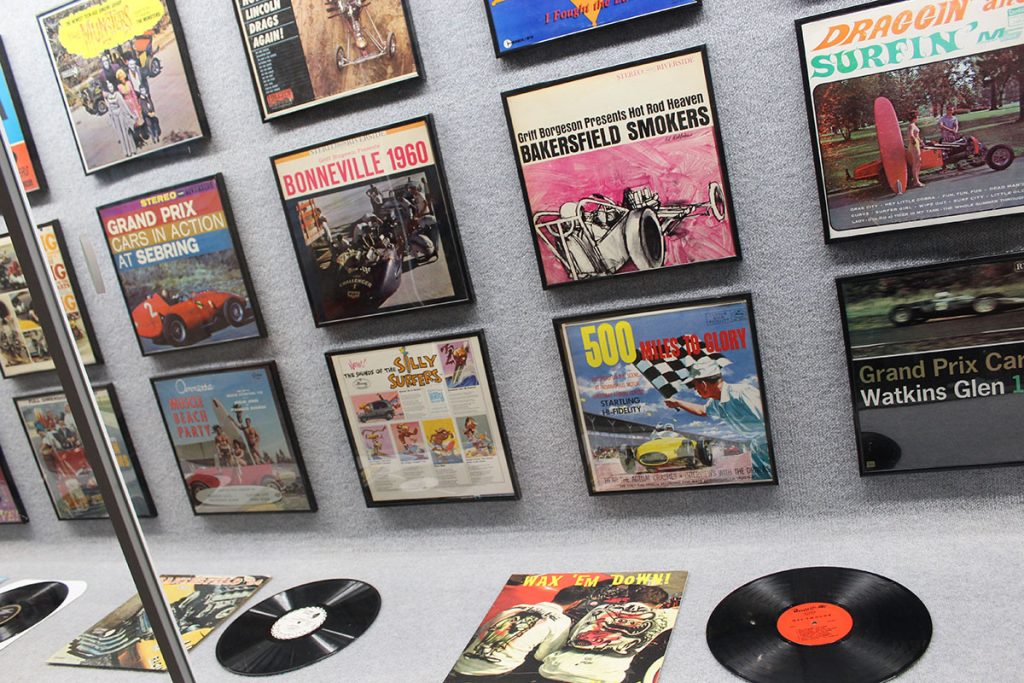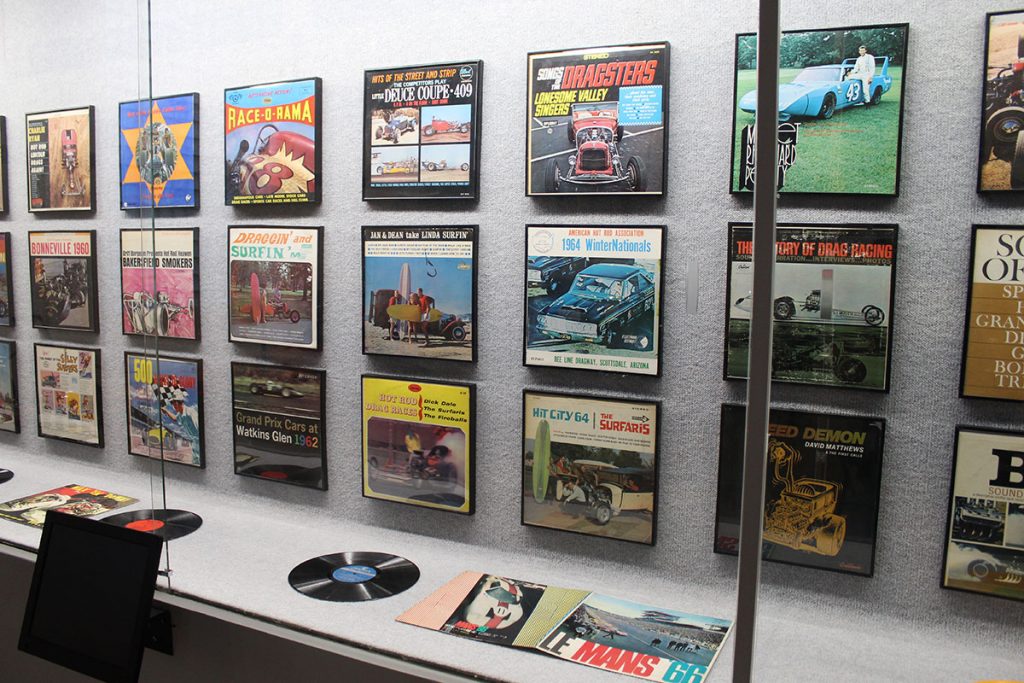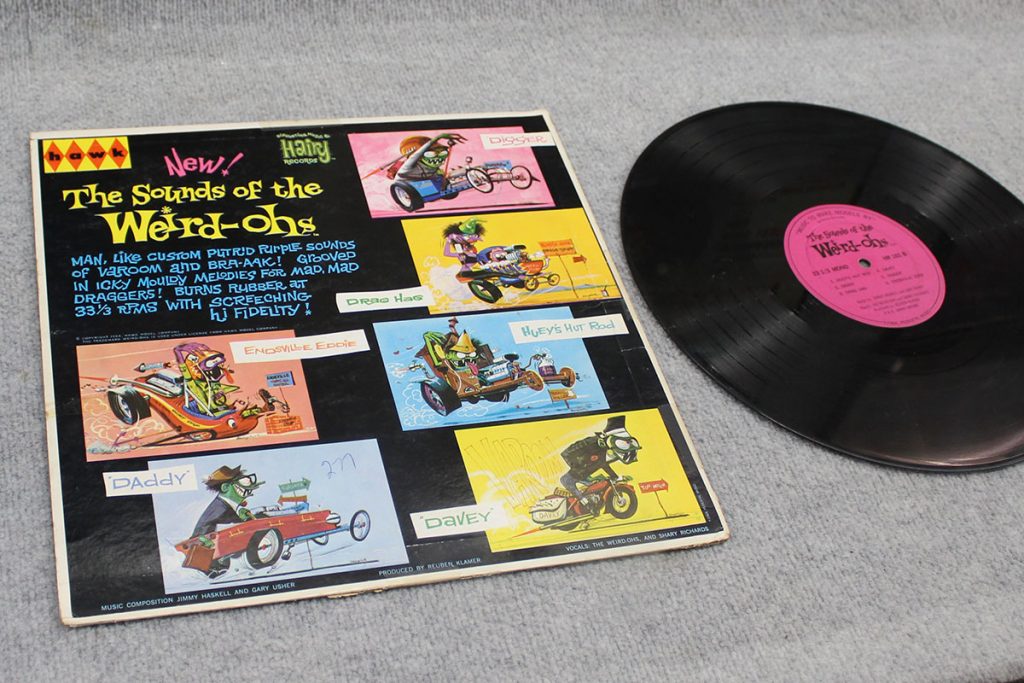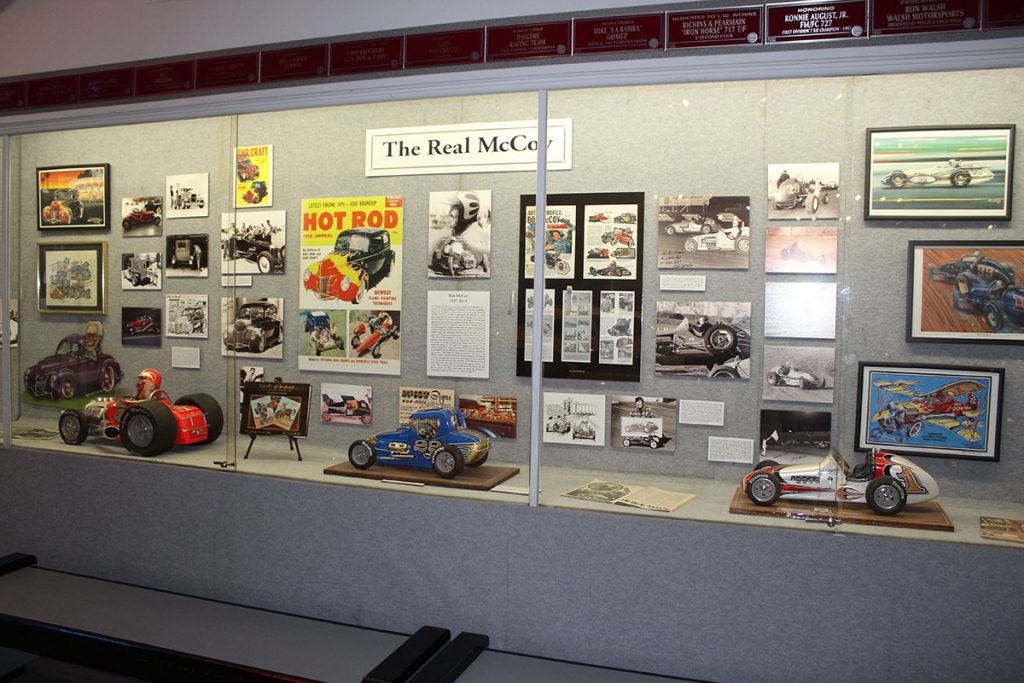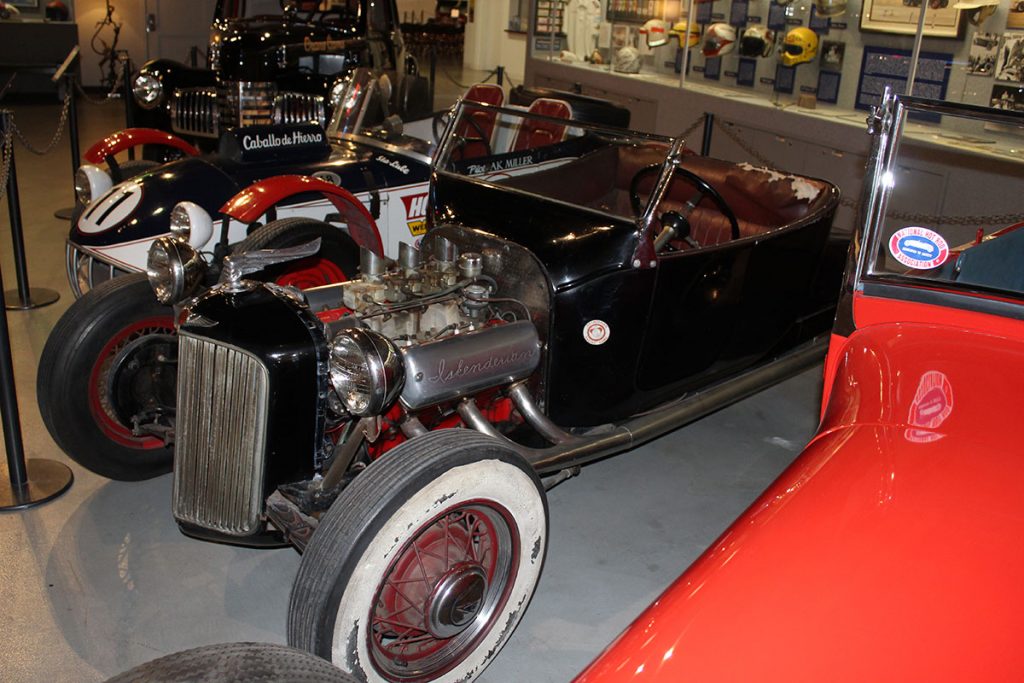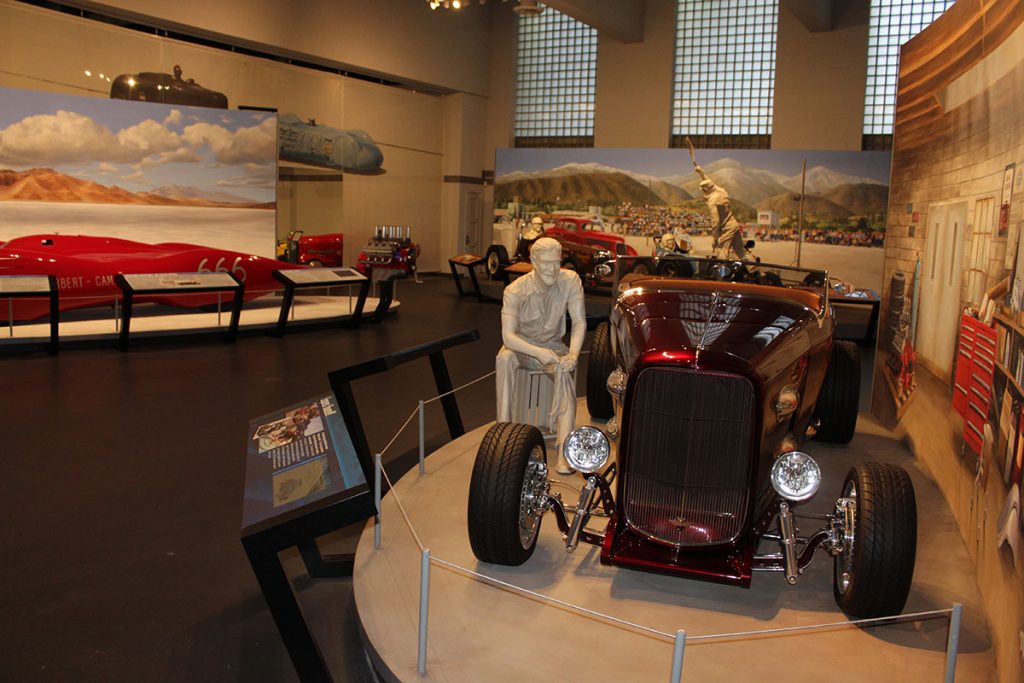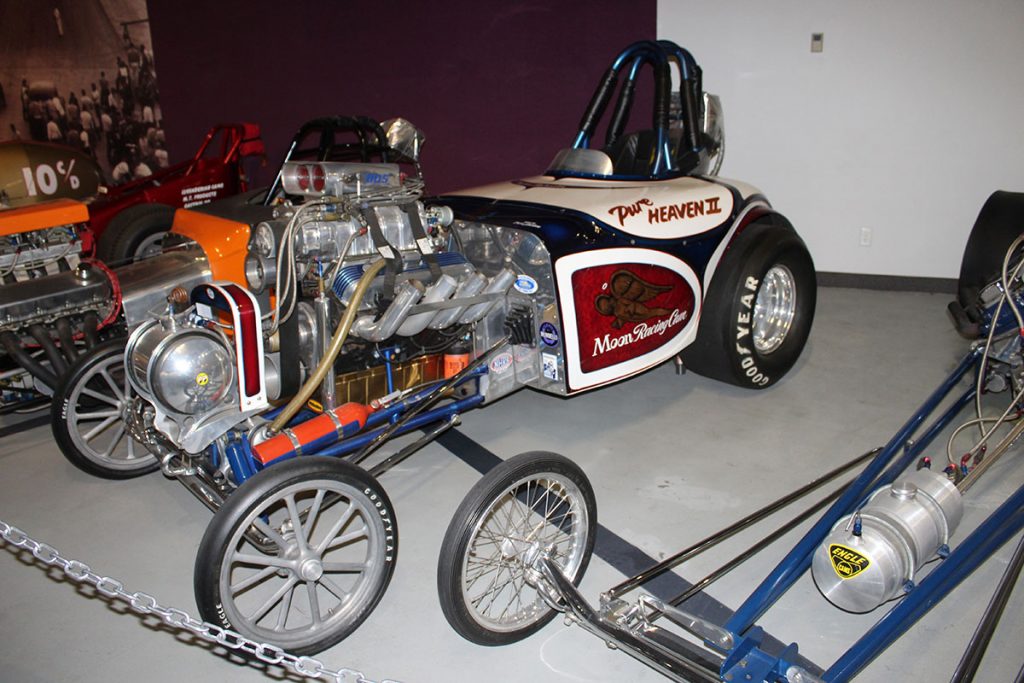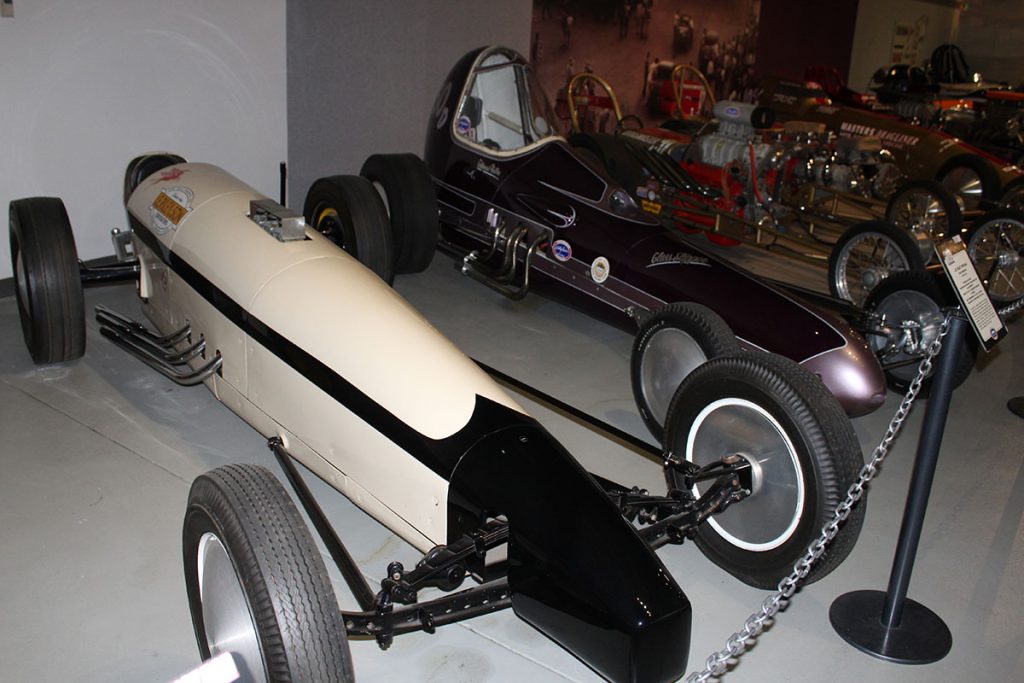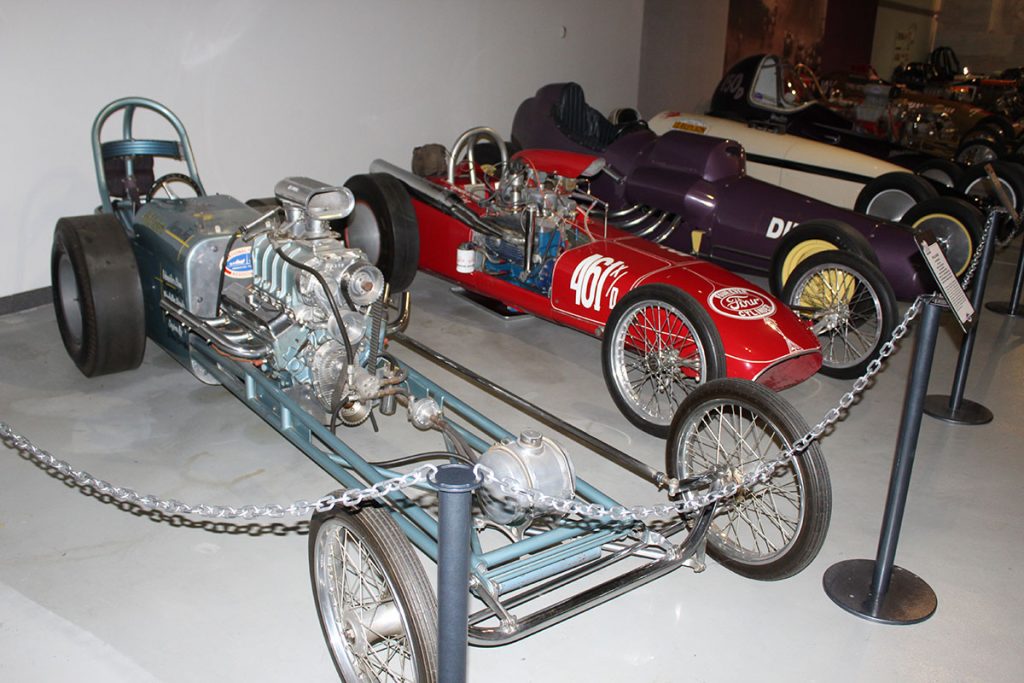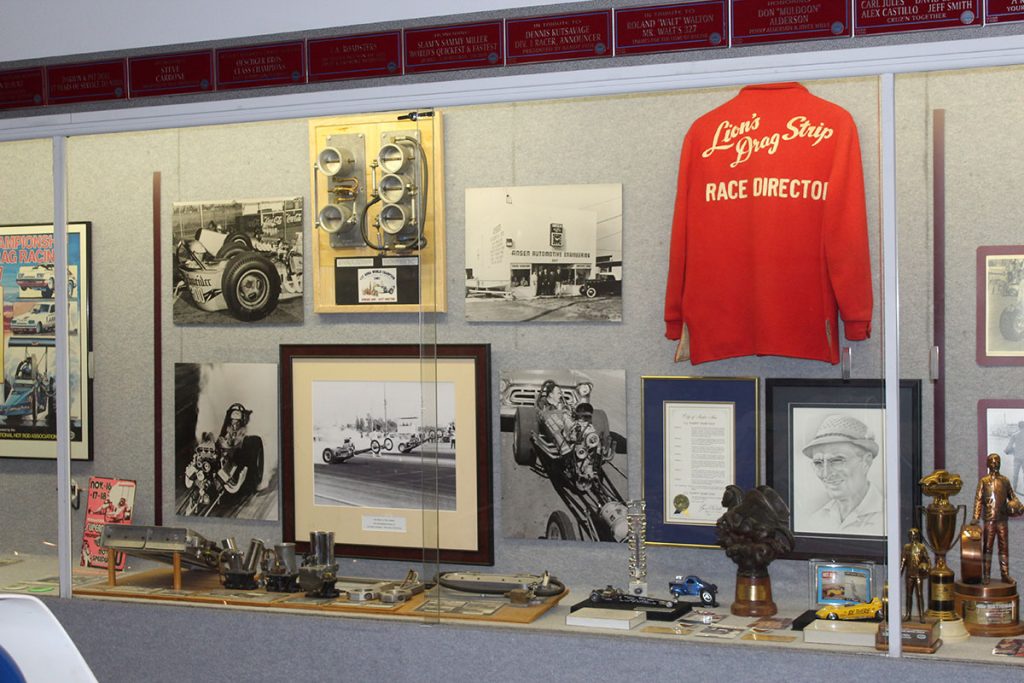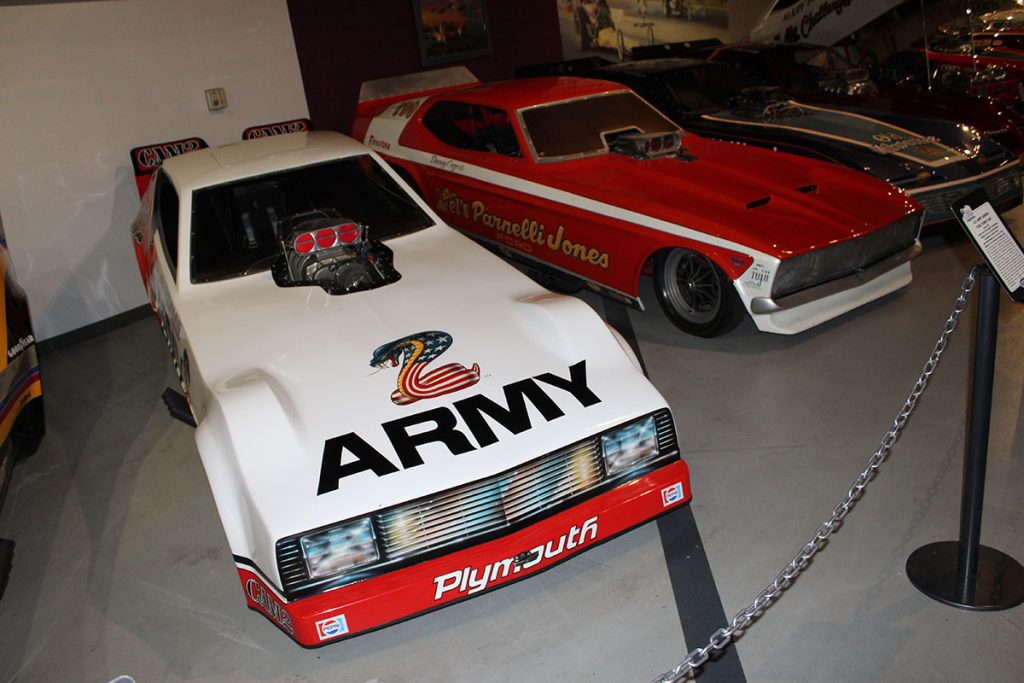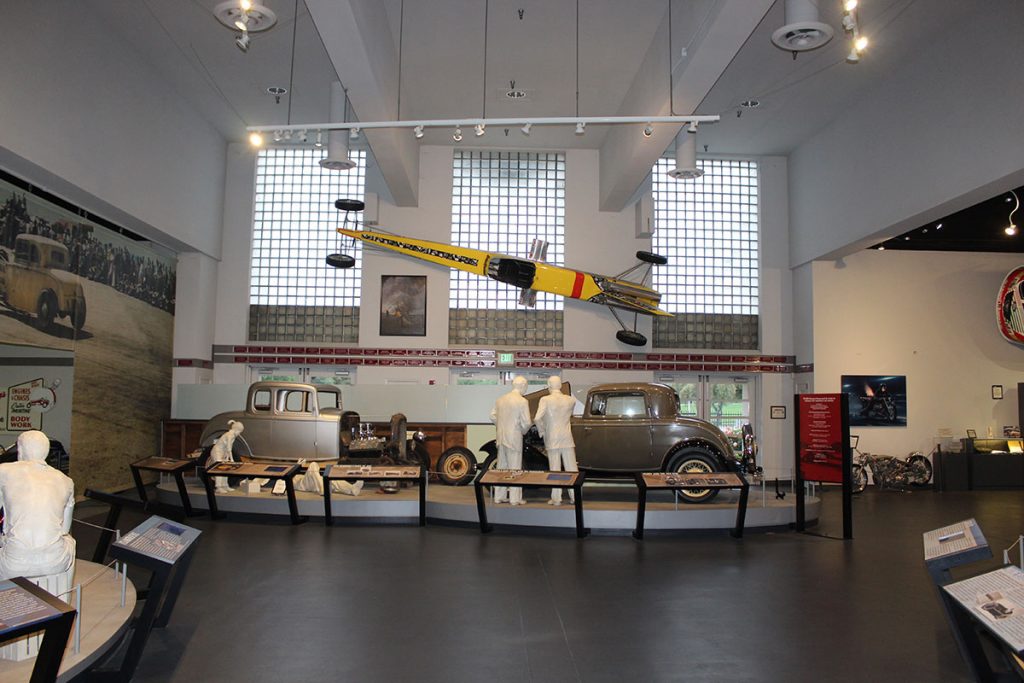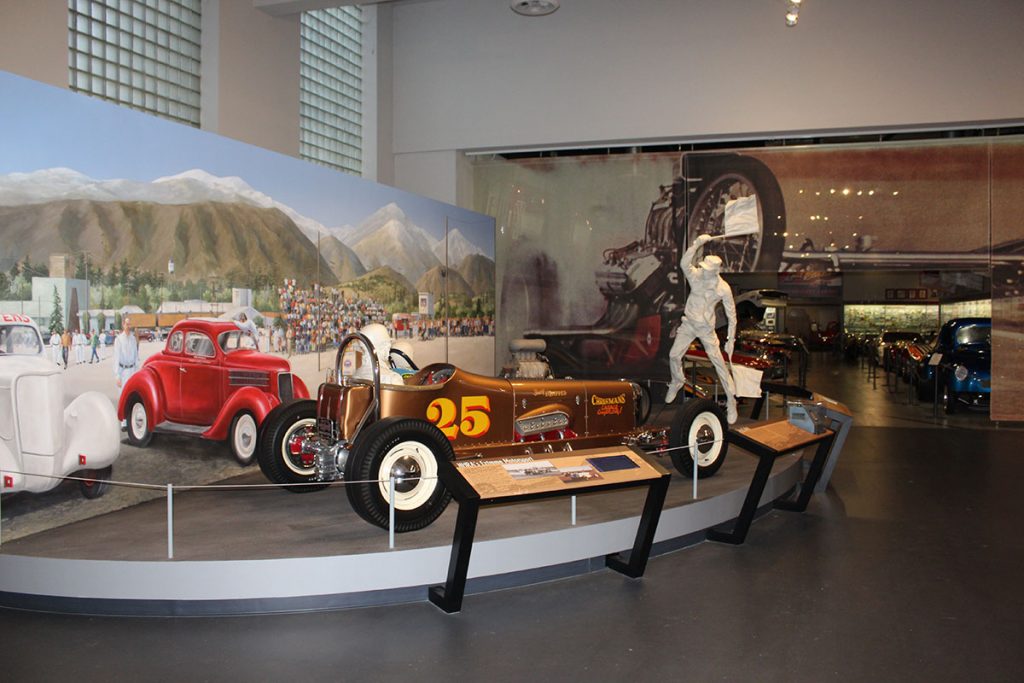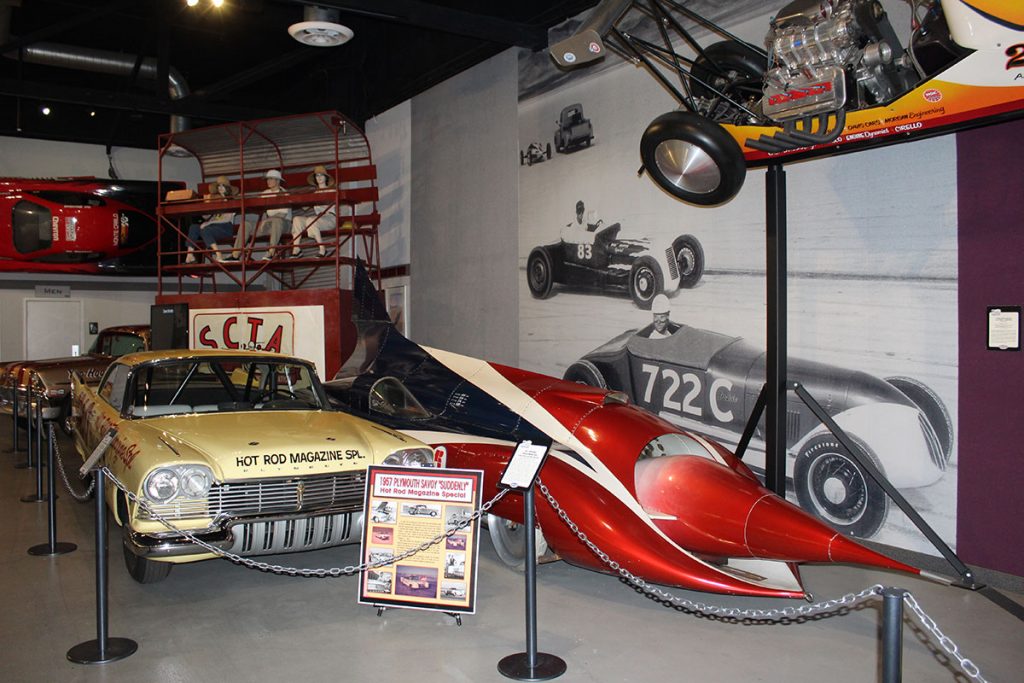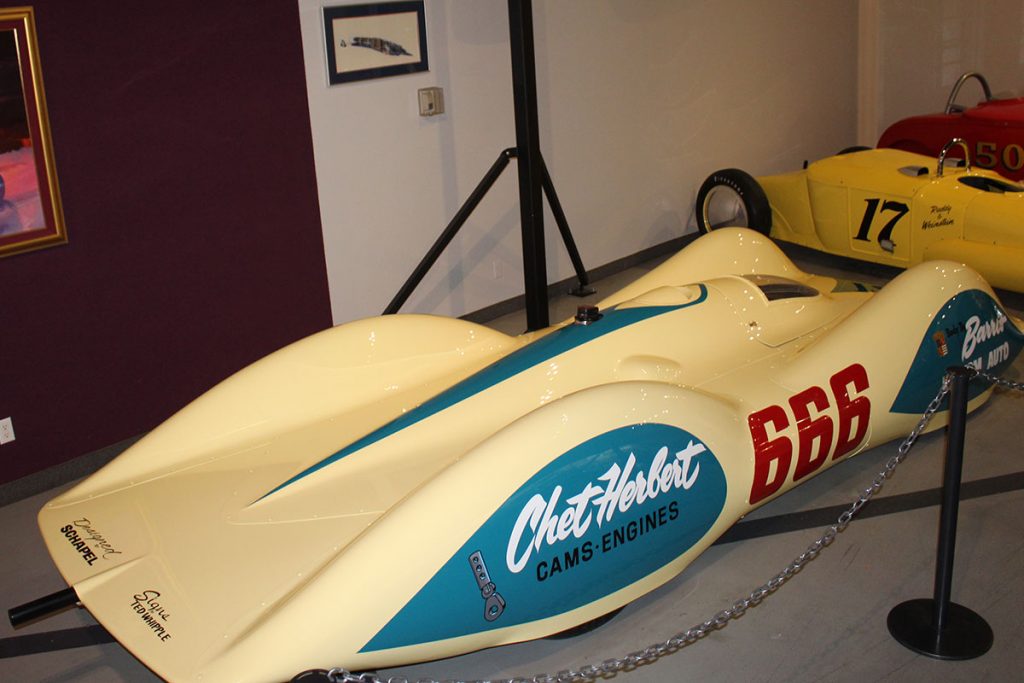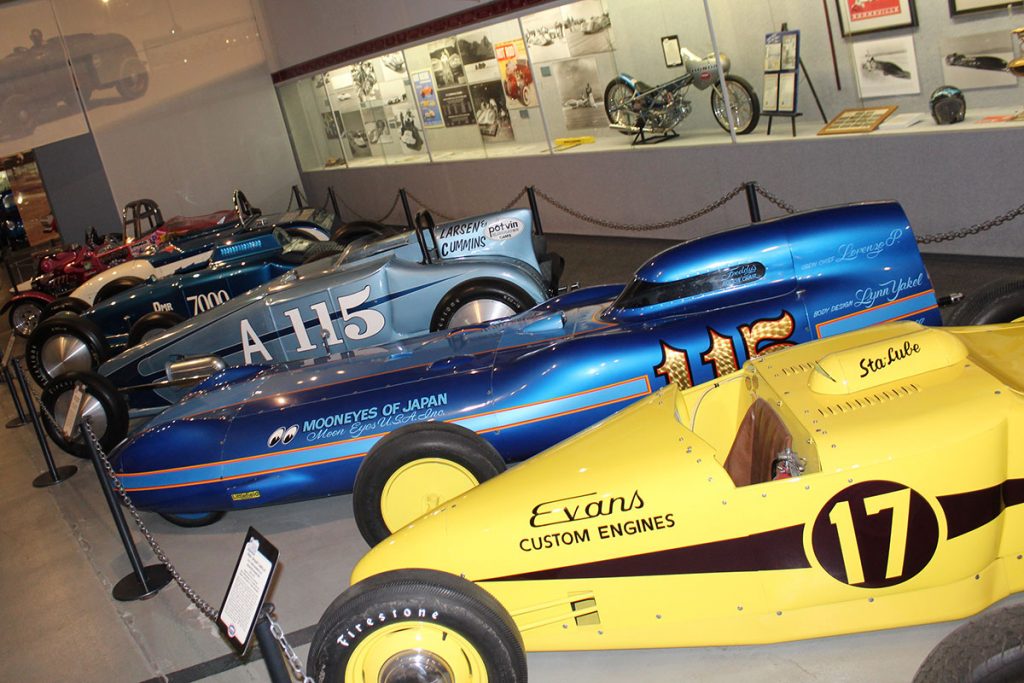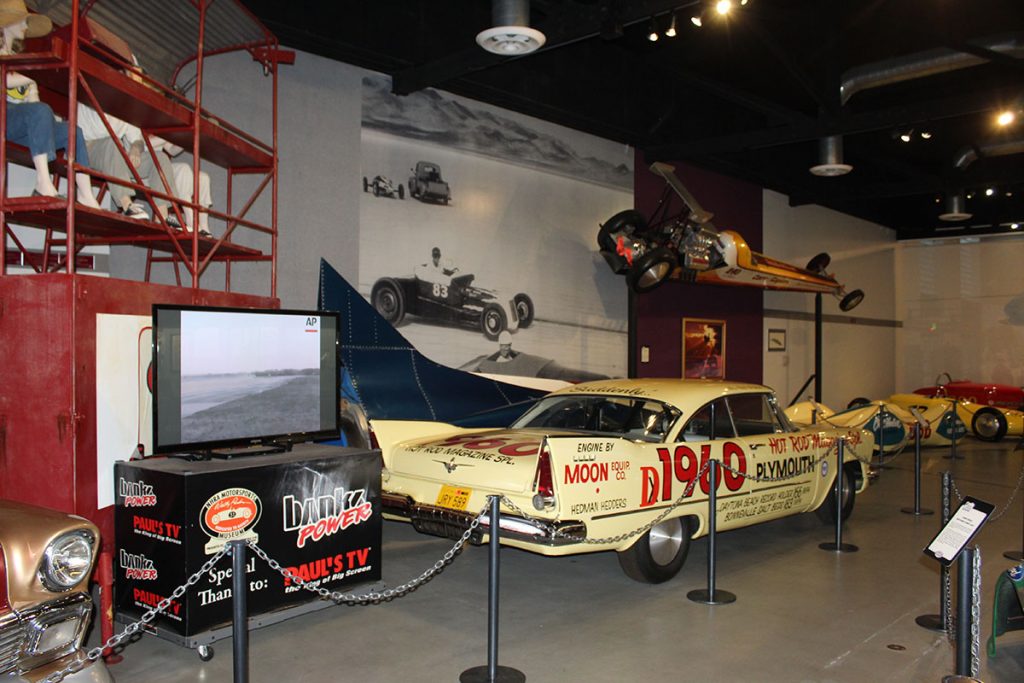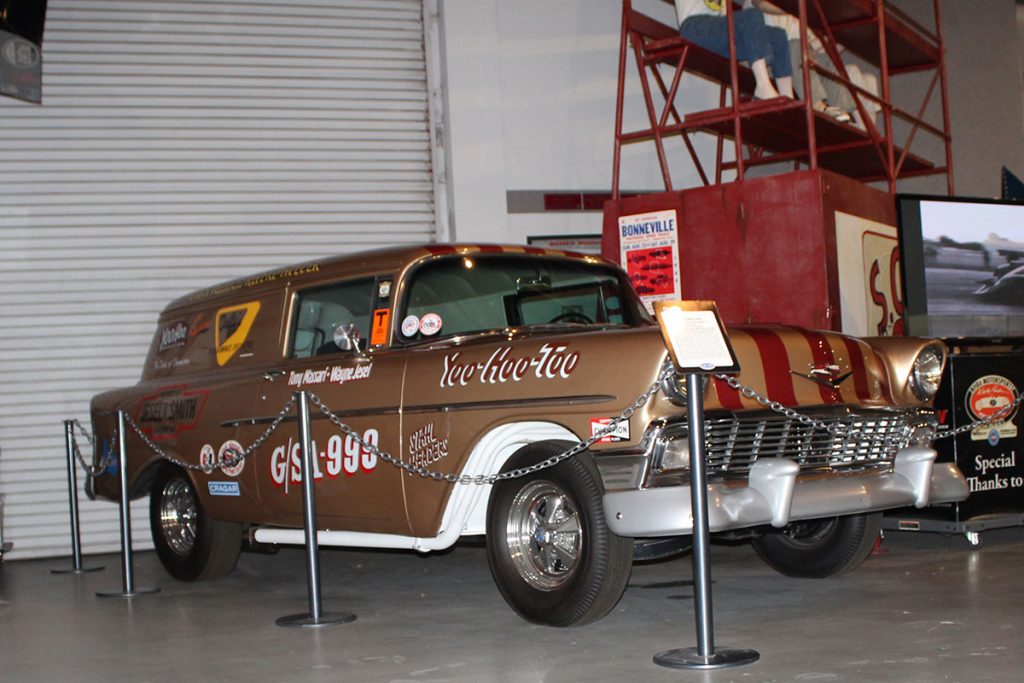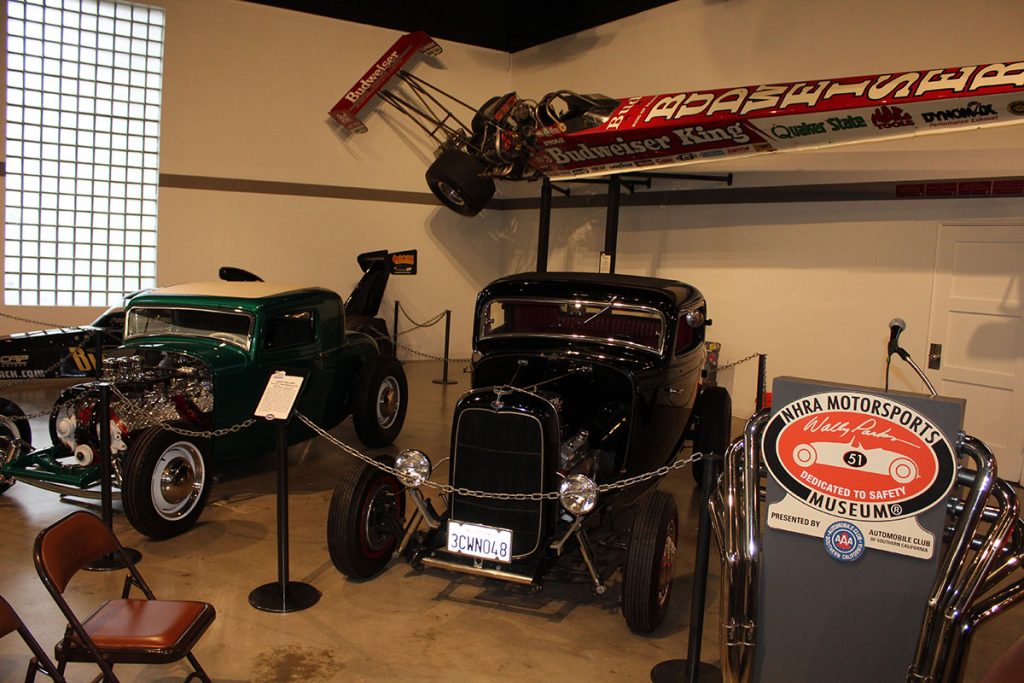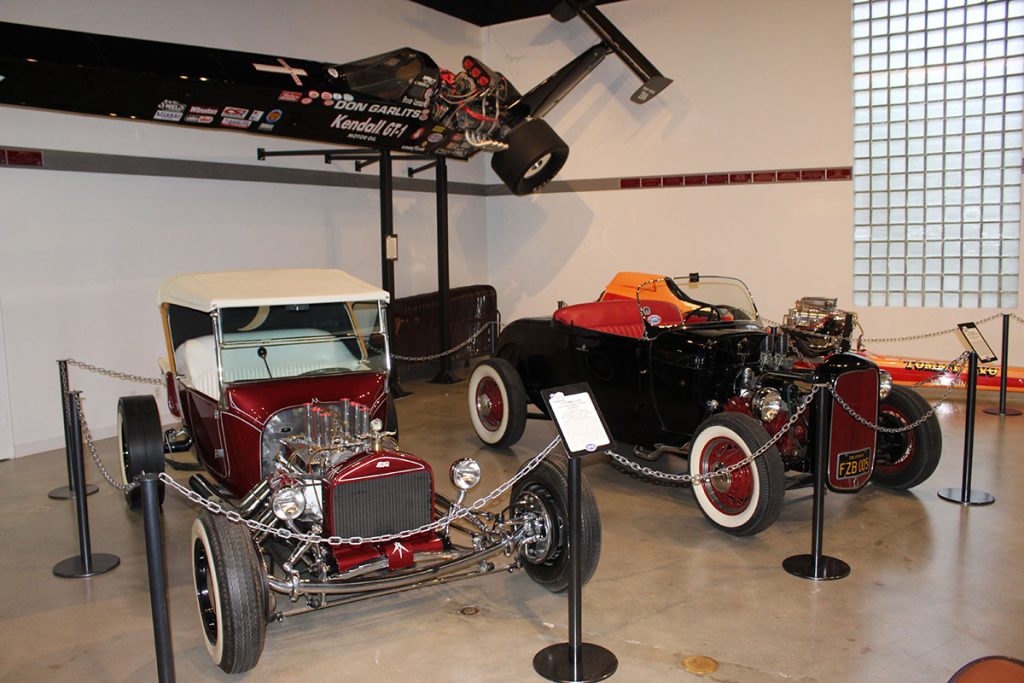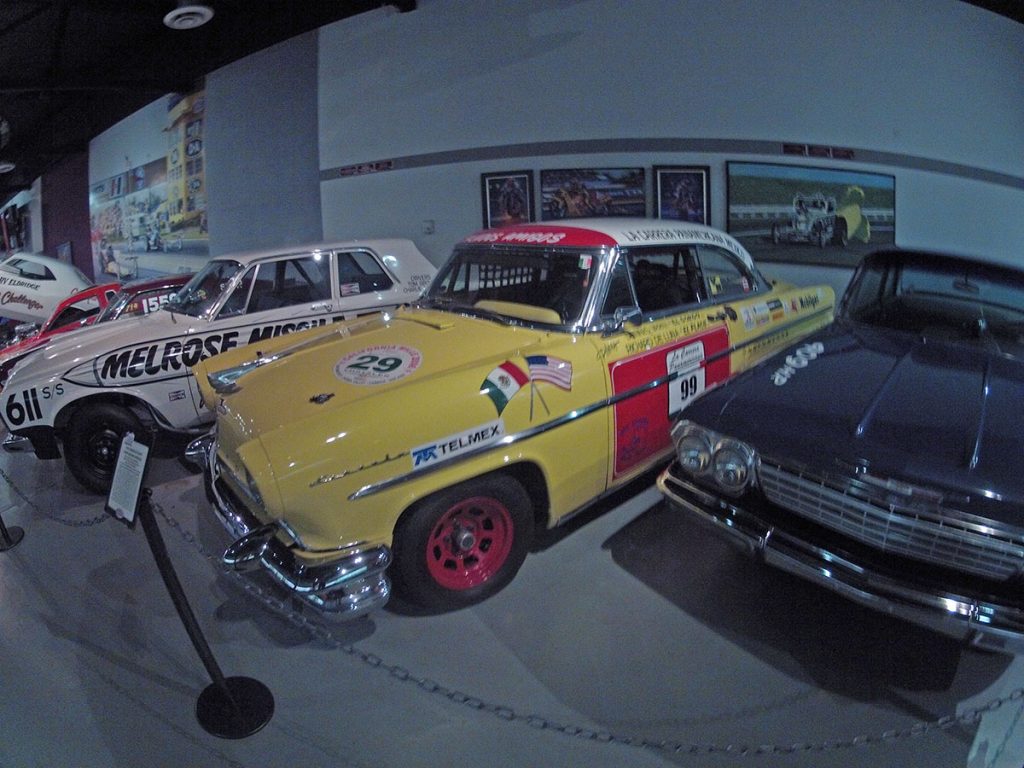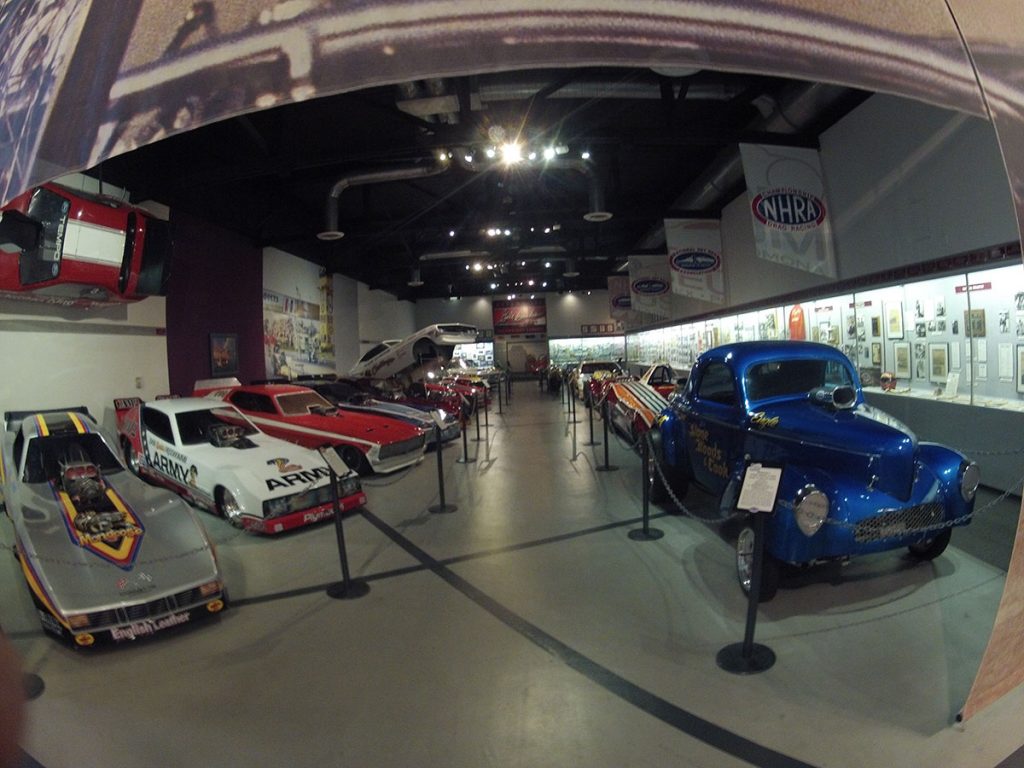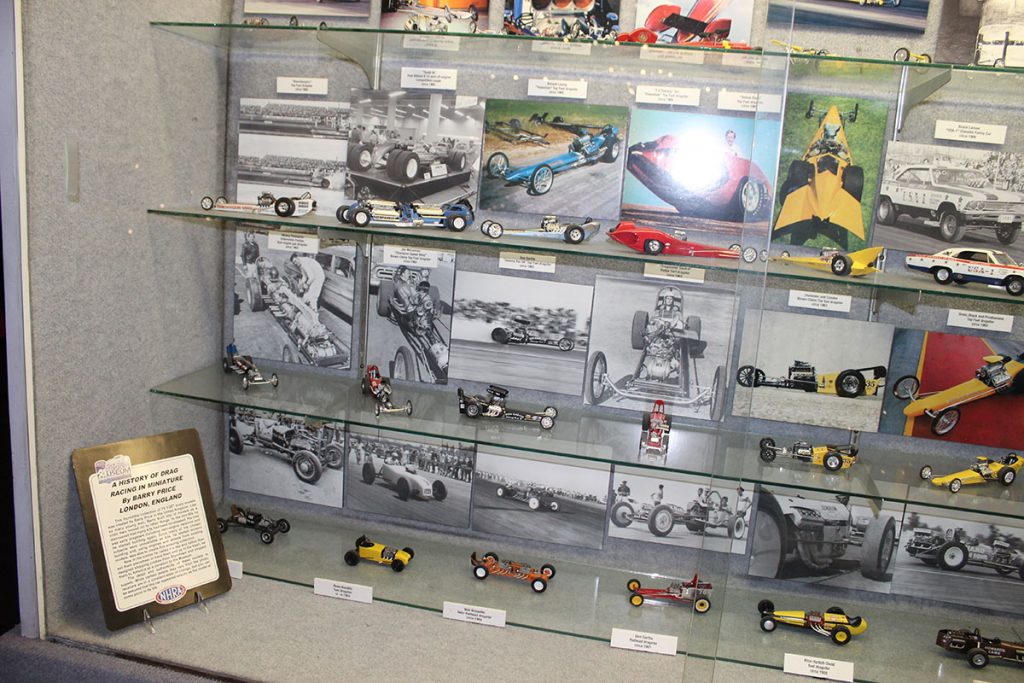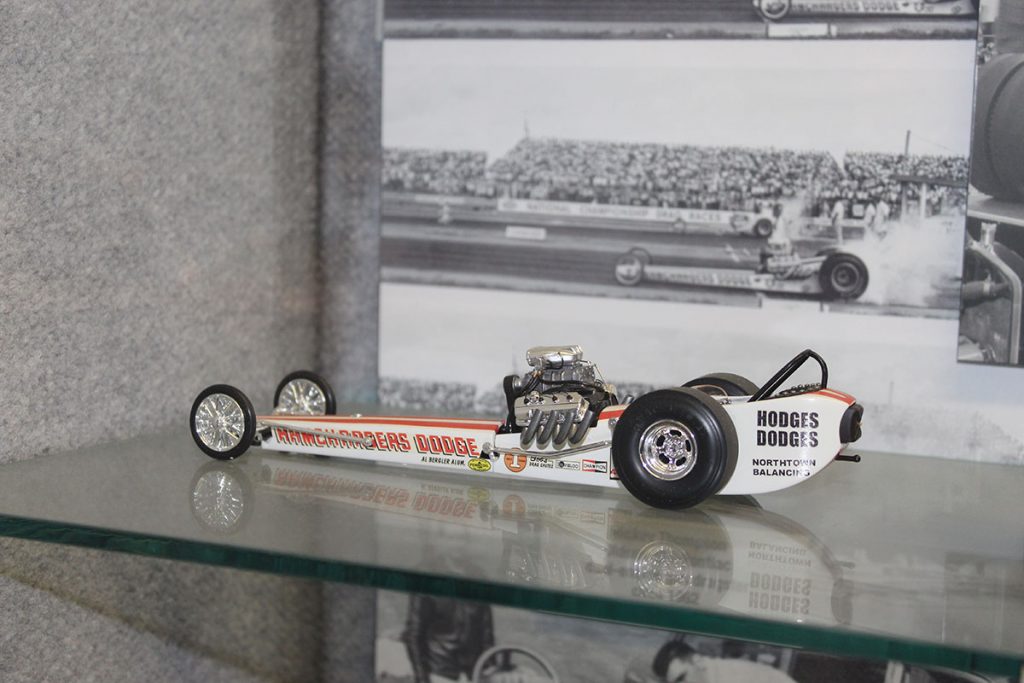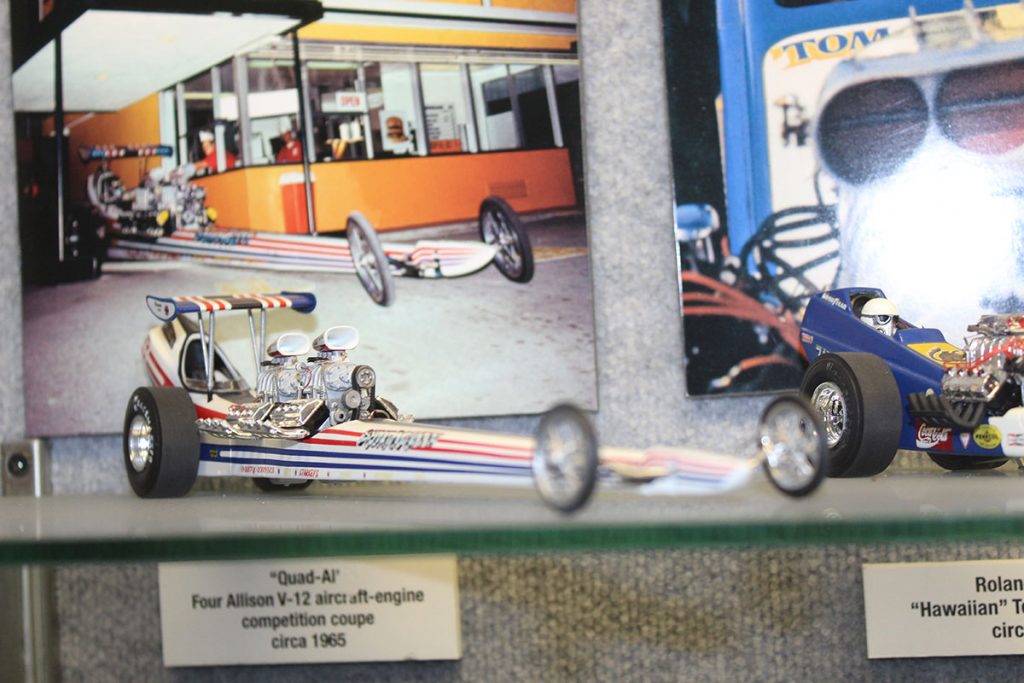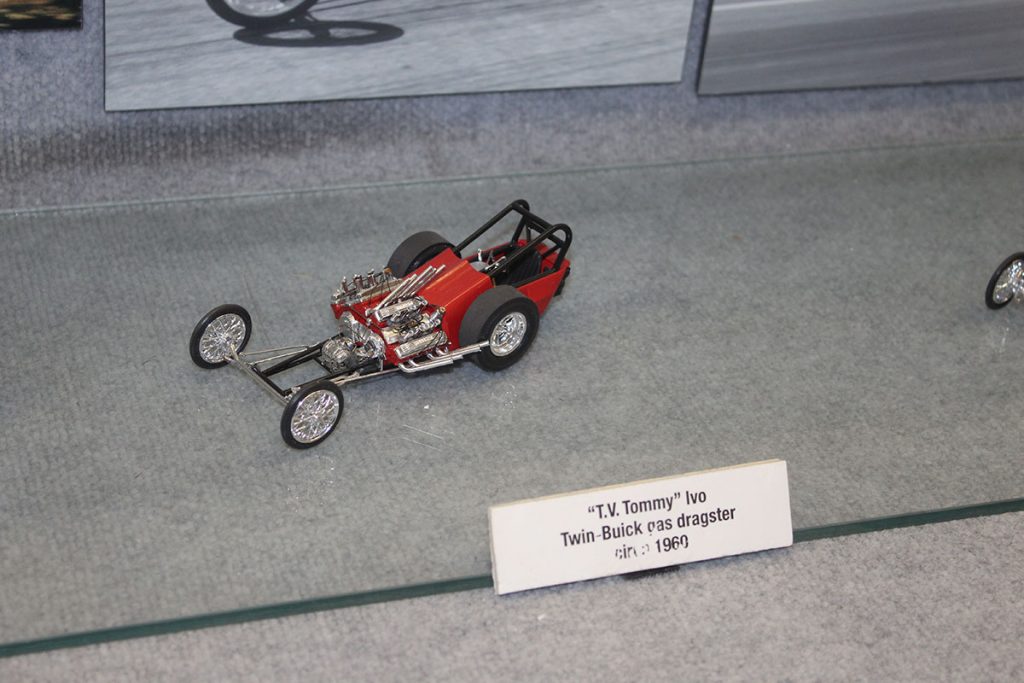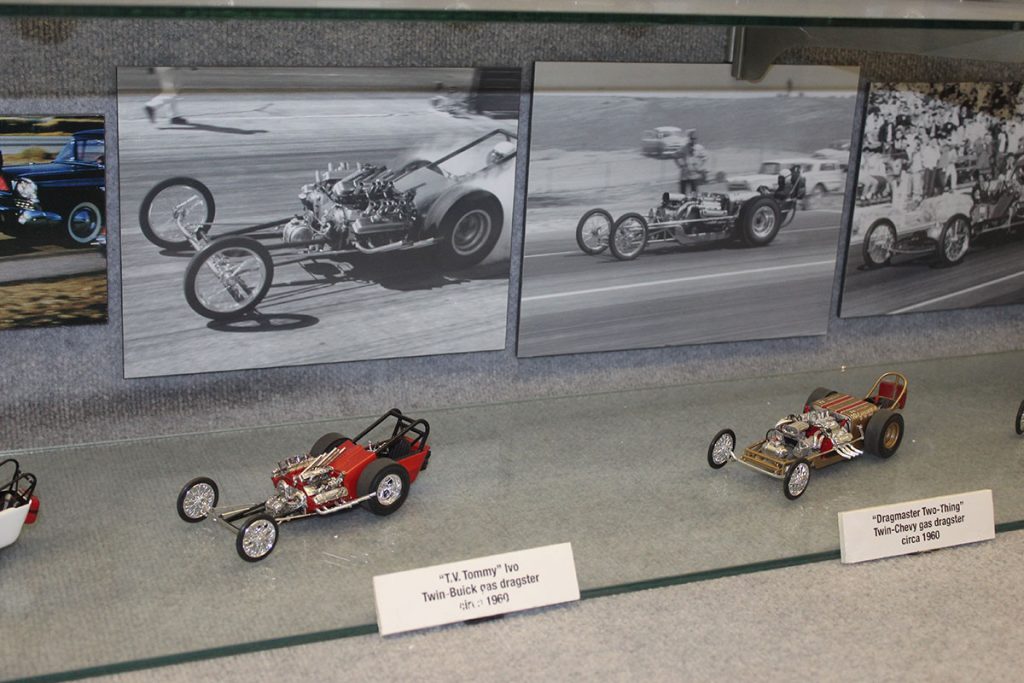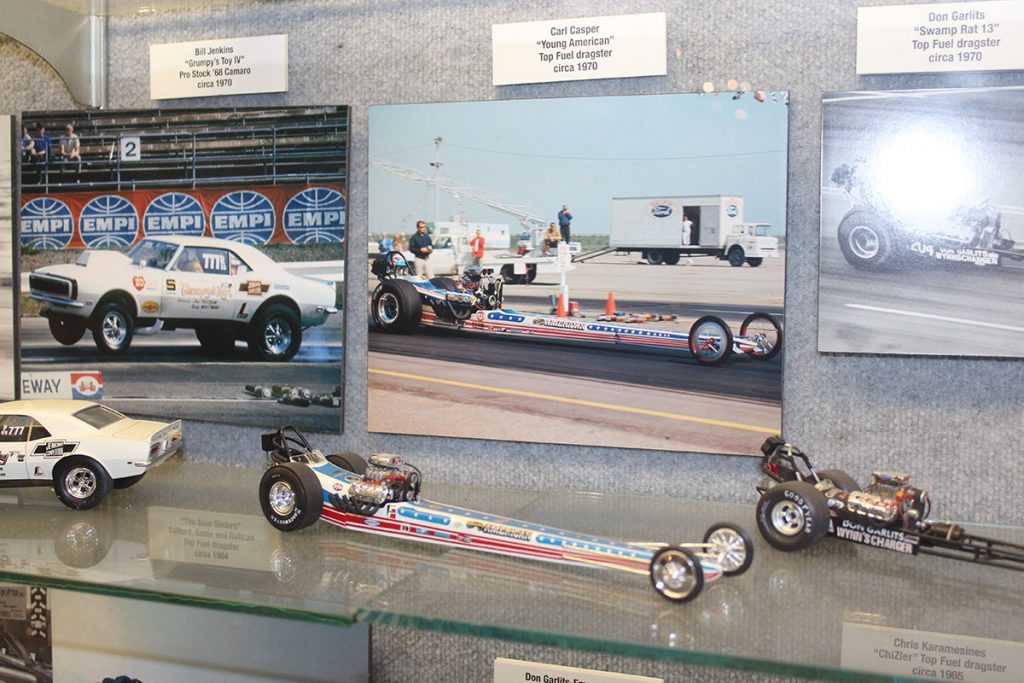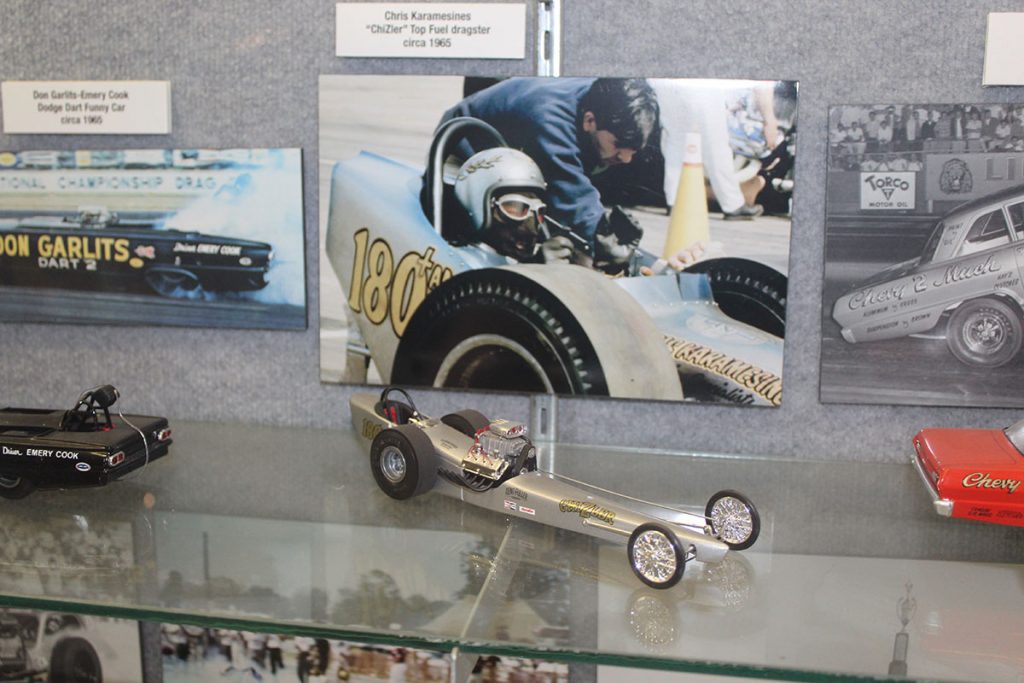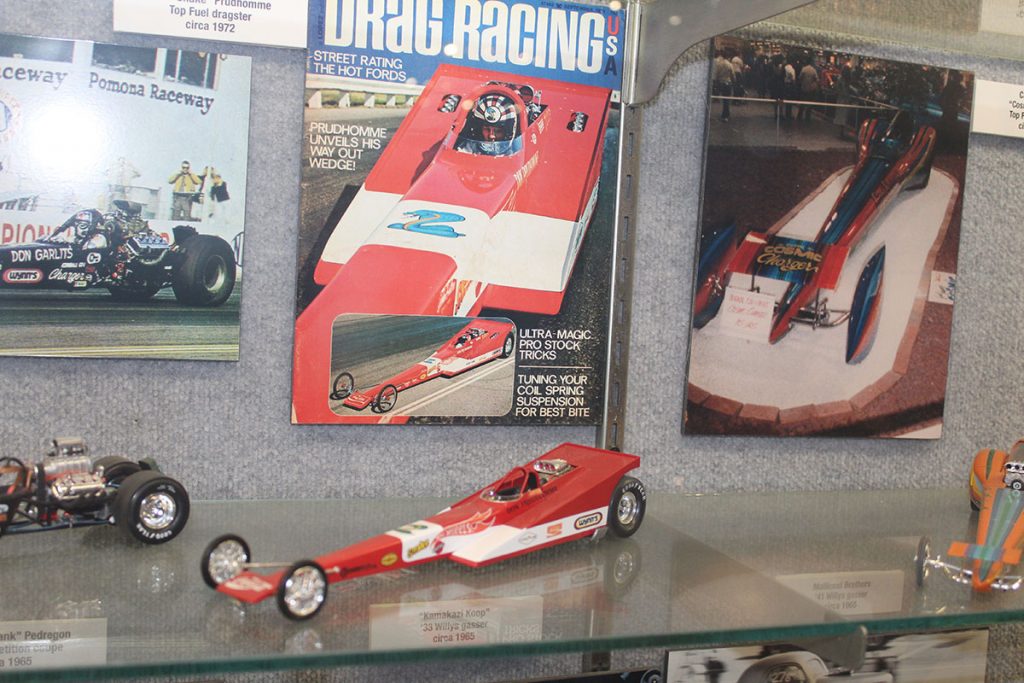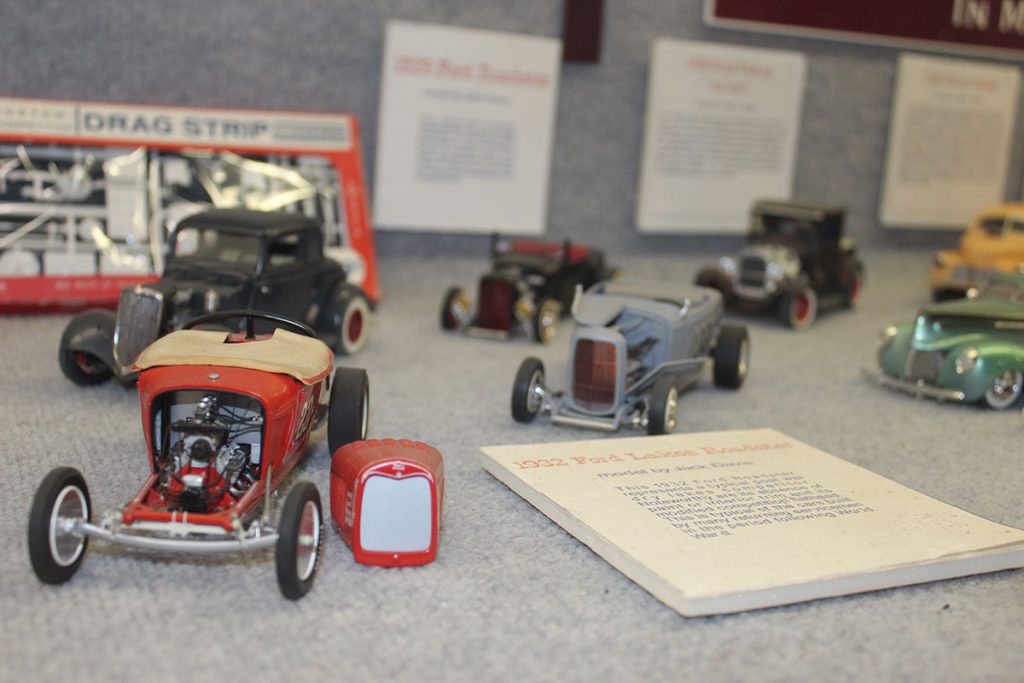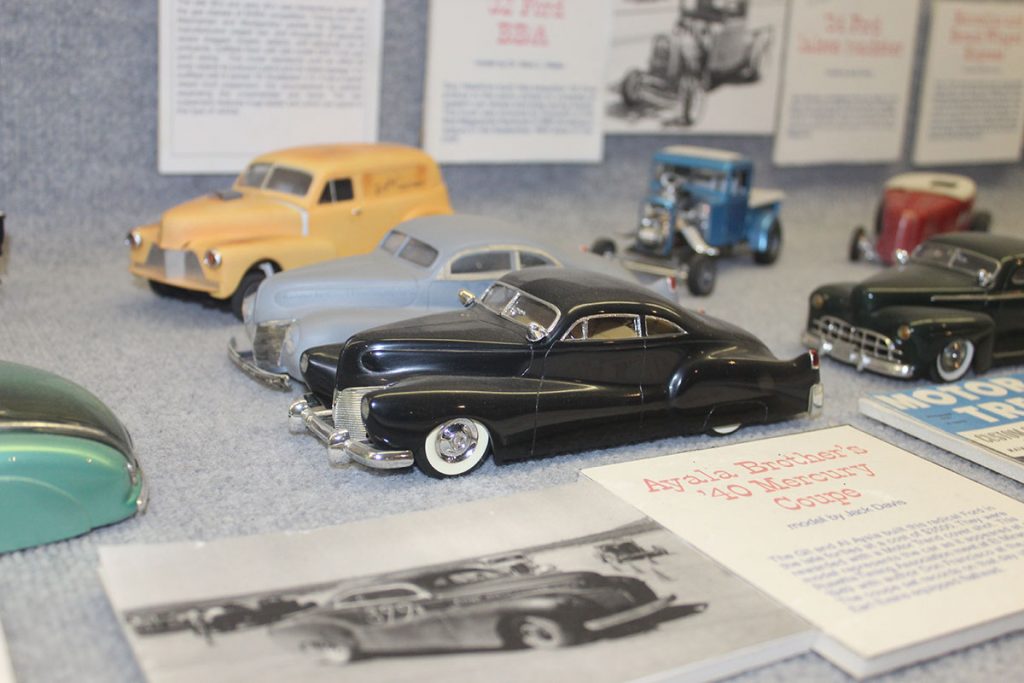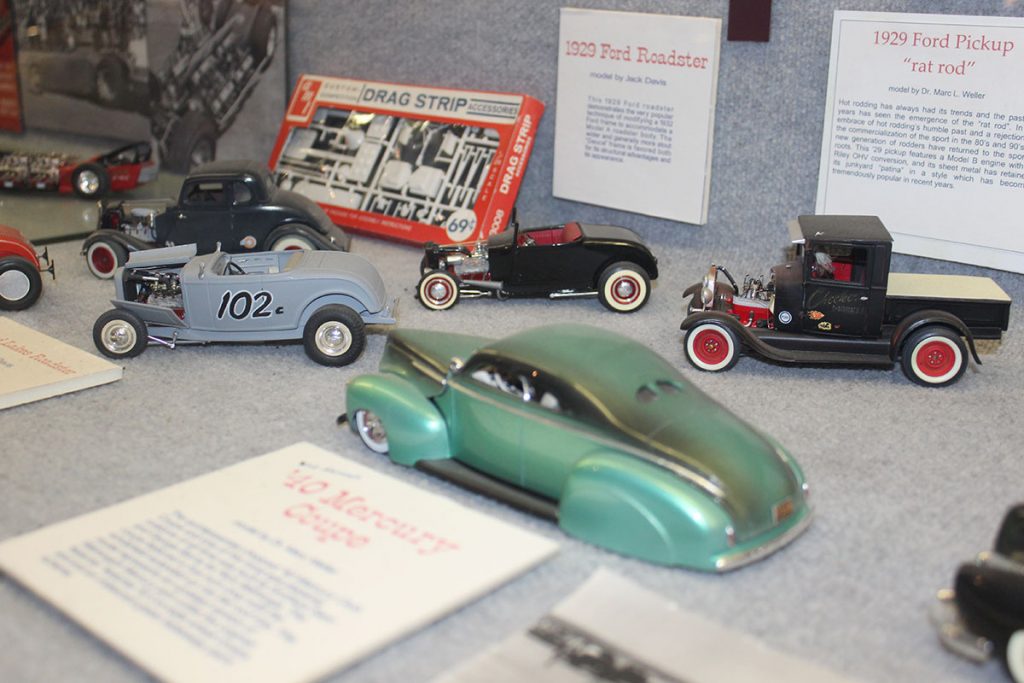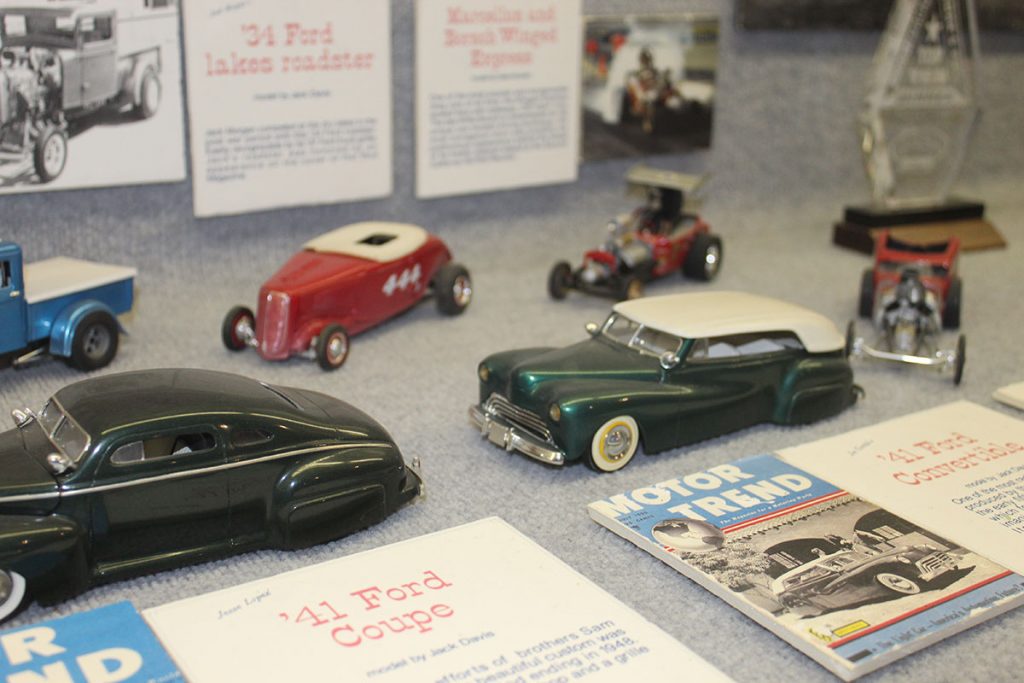An Intimate Evening At The NHRA Motorsports Museum
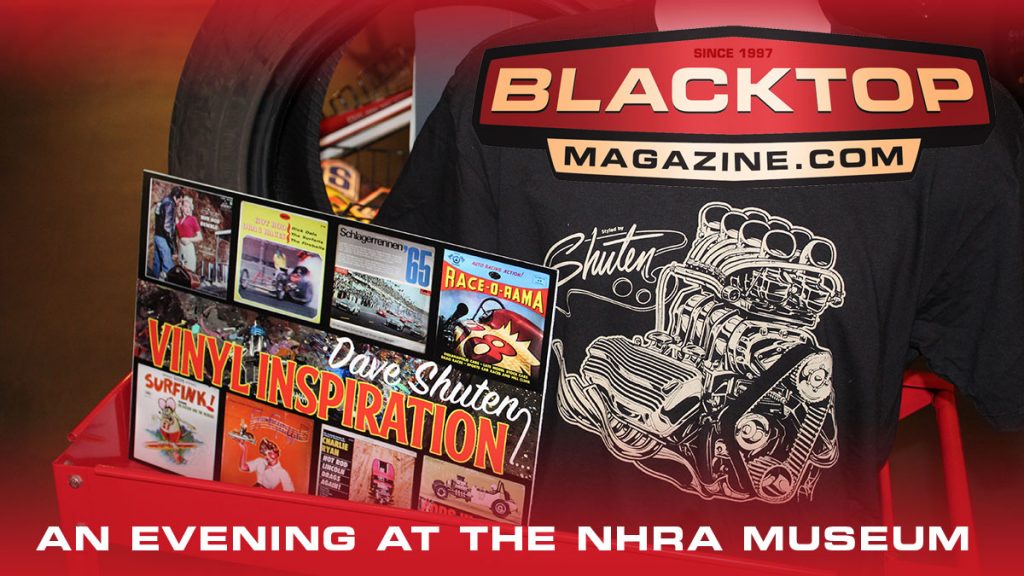
After spending the day at Mitzi’s Pinup Pool Party, I rolled Project Riff-Raff over to the NHRA Museum for the Vinyl Inspiration exhibit opening reception.
It was a big day, May 18, 2029. Over at the Irwindale Dragstrip was Nitro Revival 3, a great day for drag racing and exhibitions over there.
I was welcomed by the staff at the museum who tell me the presentation will be started soon, and I am welcome to a taco cart in the patio behind the museum.
I see the presenters, Craig Metros, Rick Dore, and Dave Shuten who’s collection of vinyl record covers are on display in the museum. Ron Cambra and his family come in and we all start yukin’ it up. Ron’s shop has painted two of the recent Rick Dore creations. I am diggin the custom restorations Dave has done over at GAS, Galpin Auto Sports and Craig Metros was featured on one of my favorite shows Garage Dreams when he was a design director at Ford Motor Company in Australia. In that episode he shares his collage and mixed media automotive artwork.
Museum Director Larry Fisher introduces the group as they take a seat and start a cool bench-racing session. Each one shared some background and we got into it about the greying of our industry/culture. The conversation moves to the process of designing and building a car from each of the diverse backgrounds. Rick, inspired by early French coach-builders of the 30’s and 40’s. Dave restoring Roth and other show cars of the 60’s making many run, as they never did before. And Craig shares the process of design in a corporation with teams of finance, tech, engineers, fighting him at every turn.
Craig starts the evening off by asking the question: “Are kids into drag racing like we were when we were young?”
Larry shares a story of how a father and son came in to the museum and as the father is in heaven his son is just not into it. He’s into skateboards and video games and not connecting. He is hopeful that as a release from the digital world that these young kids will get into car for the vicerel feeling you get when driving a car you built-up.
Rick continues with how he sees the younger generations are doing what the Winfields and Barris’ did by cutting up a new car to hop it up. He doesn’t see the old hot rodders customizers today mixing it up with the younger generations… and that’s a shame.
Dave points to the parents of those kids who skipped it. Skipped the joy of the automobile.
Larry suggests it skips a generation. You don’t want to do what your un-cool dad did, and then their kid looks up to the grandfather… Yet, now with the “maker-movement” there is a renaissance of people out there in all industries looking to actually MAKE things.
Dave suggests that the kids maybe getting a bit bored of the phone in their hands all the time. Larry shares his experience with competitive robotics events in high schools today.
This is why Youth Engagement and our #KidWrencher projects are so important for us here at Blacktop Magazine
Rick grew up in a poor neighborhood in NY and not around the car culture. The only guys he saw with hot cars were those who returned from Viet Nam racing their muscle cars at Englishtown or National. It wasn’t until the 80’s for him raising his kids he started building his cars. Looking up to Arlen Ness and Tognotti at the Oakland Roadster Show, and the West Coast Kustoms Cruise with Pitchette, Watson, Baylon, etc. He recalls in the ’80’s the talk was about Rod & Custom coming back and the advent of catalogs for the automotive aftermarket.
Dave comes in about how silly the cars were back then because they were built with what ever the builder had around, there was no internet and catalogs to source products. You had to build it or alter something else. He continues that you don’t have to love those cars, but you have to respect the “ugly/weird” stuff that was done, because that was history that paved the way for the cars today.
After hearing these stories, Larry expounds on how all three of the panelists came from somewhere else and have a keen understanding of hot rodding that may be heightened by coming to California. Although Craig, says he still isn’t here yet. After his stint in Australia and Japan, he is back in Dearborn waiting to come to California. Craig continues how there is a healthy car culture in Detroit, but NOTHING like it is in California. “How did all this weird stuff come to California.” He enjoys going to the Pomona Swap Meet to see the variety of the culture in California in one event. In Detroit, it all stops for 4 months.
Dave comes in saying he got a lot more done in Detroit. During those winters he could knock out three cars, but here there is too much going on, too many distractions, events, dinners, cruises…
Rick talks about how Cambra’s shop is rockin’, Dave’s shop is rockin’ the can’t see the industry dying off anytime soon. There is a lot going on. New cars coming to shows every year.
Ron Cambra says how his clients are the guys who have money now and are building their dream cars, rather than the kids hopping up their cars. Back in the day, there wasn’t stuff on TV, it was a rare sight to see drag racing on Wide World of Sports. It was the neighborhood custom shows where you could get a taste of the fuel fed fantasy.
Dave, the youngest of the crowd remembers hanging out at the drive-in playing in the sand pit below the screen watching Smokey and the Bandit. His favorite movie of all time was Hot Rod where they find a Willy’s in the garage.
The benchracing session came to an end as Larry thanked everyone for coming out. It was a great evening I wish more people could have been there. If I had known it was a lecture, I would have brought more equipment to record it for you. Next time.
In the meantime I ask you all to take a moment and check out the NHRA Motorsports Museum. It is a fantastic display of our culture and heritage and an important place to share with younger generations. The displays are awesome and change out frequently. Be sure to visit the Twilight Cruise on the first Wednesdays of the month from April through December, excluding September for the LA County Fair. More information at NHRAMuseum.org.

